HEADLINES | 5
SENSE OF PLACE
A new photo exhibit draws parallels between the Holocaust and the Armenian genocide.



A new photo exhibit draws parallels between the Holocaust and the Armenian genocide.


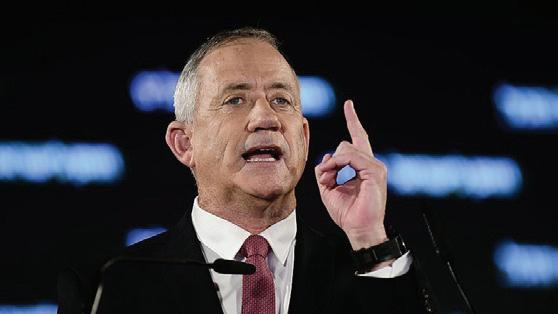
For the first time since freshmen Democratic legislators brought renewed scrutiny on the American-Israel relationship — and amidst a rocket attack from Gaza that cut short Israeli Prime Minister Benjamin Netanyahu’s trip to the United States — AIPAC held its annual Policy Conference in Washington this week. Despite the controversy, politicians from both sides of the aisle sent a clear message: Israel maintains strong bipartisan support in the halls of Congress.
“We are joined this week by leaders of both sides of the aisle and both sides of the Capitol because support for Israel in America is bipartisan and bicameral, relentlessly bipartisan,” House Speaker Nancy Pelosi (D-Calif.) said at Tuesday morning’s general session inside the Walter E. Washington Convention Center. “We are all here connected for good, united in our shared mission to advance peace, prosperity and progress in the Middle East, in America and around the world.”
An estimated 18,000 people were on hand for the three-day conference, which concluded Tuesday with visits by attendees to the offices of their representatives on Capitol Hill.
Pelosi’s attendance was notable for the fact that members of her
Learn eight ways to make your home more sustainable. Plus: how to do a redesign without breaking the bank.

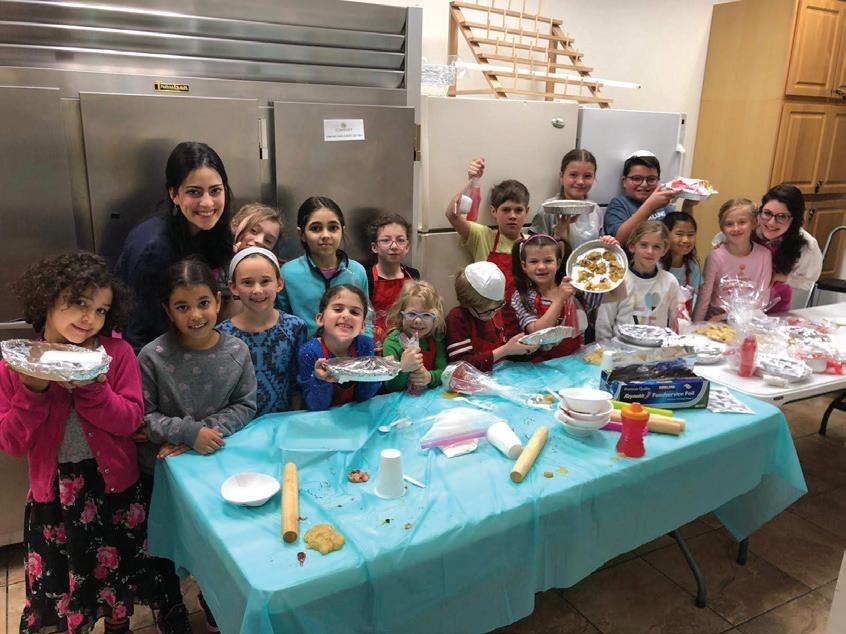

Rabbi Bonnie Koppell made history by being the first female rabbi to serve in the military. Now, she has been inducted into the U.S. Army Women’s Foundation Hall of Fame, along with 17 other women, in a ceremony on Capitol Hill that took place on the eve of International Women’s Day, March 7. Koppell began her military career by joining the Army

RABBI
CONTINUED FROM PAGE 1
Reserves in 1978. After graduating from Reconstructionist Rabbinical College in 1981, she attended the U.S. Army Chaplain School. Since then, Koppell, who is associate rabbi of Temple Chai, has ministered to soldiers, their families and civilians in her role as a reservist Army chaplain.
“The chaplain is often the first line of defense for soldiers who are having stresses in their lives,” Koppell said. “The chaplain is that safe refuge where people can come and gain both support and perspective without having to be concerned that it would be reflected in their career in the military.”
Her varied experiences as one of the few rabbis in the U.S. military have made for a memorable career. She remembers one morning exercise when she had to bless a convoy of trucks prior to their deployment. She went from truck to truck to offer encouragement and blessings, “and as I climbed up to one of these cabs to talk to the driver, one of them turns out to be a Jewish guy who said that he had been in the Army for 22 years and he had never seen a Jewish chaplain.”
Koppell knew she wanted to be a rabbi ever since she was 11, but the Brooklyn native wasn’t sure where she would be needed. She was always aware of chaplaincy
as an option, though, as she grew up right by Fort Hamilton, where the United States Army Chaplain and Chaplain Assistant School once was.
“I drove by that school frequently and I always remember always being a little bit curious of what went on there,” Koppell said.
When she was in her second year of rabbinical school, she saw a military recruiting poster for chaplains and decided to try it out. While she enjoyed her time in the chaplain candidate program, she didn’t necessarily think she would end up being an active duty chaplain. But her then-husband encouraged her to continue with it after he learned that she was the first female rabbi to be an Army chaplain.
“His argument for me to stay on was that if I left it would look bad for all female rabbis,” Koppell said. “It would’ve looked like I couldn’t cut it, and he said that I had to set a good example.”
Setting a good example turned into nearly 40 years as an Army chaplain, including service during Operation Desert Storm, when she was stationed at the Academy of Health Sciences at Fort Sam Houston, near San Antonio, Texas. There, she was the only rabbi on staff, tasked with attending to the spiritual needs of the sick and wounded.
After being released from active duty, she served in the 164th Corps Support
Group in Mesa, Arizona, did a yearlong tour at Fort Huachuca in Arizona and served as staff chaplain for the 37th TRANSCOM and the Fifth Army.
In 2005, Operation Iraqi Freedom took her Iraq, where she celebrated Passover with Jewish troops in 2005 and 2006. She spent Chanukah with Jewish service members in Kuwait and Afghanistan in 2005 and 2006, and was deployed to Afghanistan in 2008. In 2010, she celebrated Passover in Kuwait.
Koppell received many awards for her service, including three Meritorious Service medals, two Army Achievement medals and the Global War on Terrorism medal for her service in Iraq in 2005.
She’s received civilian honors, too: She made The Forward’s list of America’s most influential women rabbis and was named Mesa “Woman of the Year,” among other tributes.
Although Koppell, who ended her military service in 2016, was unable to attend the ceremony on Capitol Hill, she was very humbled and honored to be inducted into the Hall of Fame.
“To have a sense of being recognized for what I did was very touching and meaningful,” Koppell said. “To travel to different combat zones and provide Jewish spiritual support to service members is among the most meaningful aspects of my career.” JN
OFFICE HOURS
8 a.m.-5 p.m. Monday-Thursday
8 a.m.-12:30 p.m. Friday
12701 N. Scottsdale Road., Suite 206, Scottsdale, AZ 85254 Phone: 602.870.9470 | Fax: 602.870.0426 | editor@jewishaz.com | advertising@jewishaz.com subscriptions@jewishaz.com | www.jewishaz.com
PUBLISHER | Jewish Community Foundation of Greater Phoenix


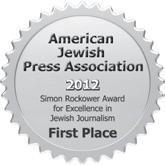
EDITORIAL DIRECTOR | Liz Spikol
MANAGING EDITOR | Janet Perez
STAFF WRITER | Nicholas Enquist
CONTRIBUTORS | Joel Zolondek
ADVERTISING SALES CONSULTANTS | Jodi Lipson
ADVERTISING COORDINATOR | Julie Goggin
PUBLIC NOTICES | Joan Romano
CIRCULATION | Bill Sims
PRODUCTION COORDINATOR | Cheyenne Bass
PUBLISHED EVERY FRIDAY
DEADLINES
EDITORIAL: Noon, Tuesday 9 days prior to publication
ADVERTISING: 11 a.m., Friday 3 days prior to publication
Jaime Roberts, Publisher | 2013-2016
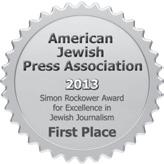
Florence Newmark Eckstein, Publisher | 1981-2013
Cecil Newmark, Publisher | 1961-1981
Pearl Newmark, Editor | 1961-1981
M.B. Goldman, Jr., Founder | 1948-1961

CONTINUED FROM PAGE 1
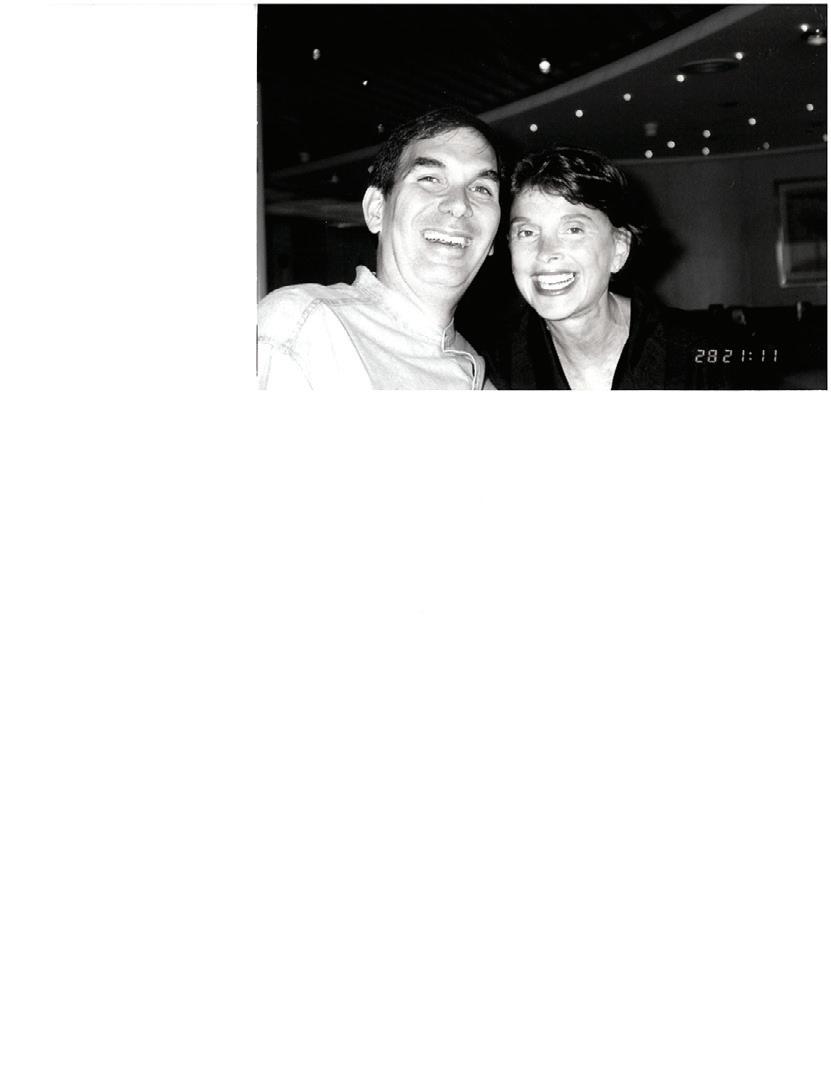
own caucus have been highly critical of continued settlement building in the West Bank and the Israeli government’s waning support for a two-state solution. Rep. Ilhan Omar (D-Minn.) has criticized AIPAC itself, arguing on Twitter in February that the pro-Israel lobby effectively buys support from American politicians. “It’s all about the Benjamins,” she tweeted, which was widely regarded as invoking an anti-Semitic stereotype.
In a speech delivered by satellite from Israel Tuesday morning, Netanyahu responded to Omar’s tweet.
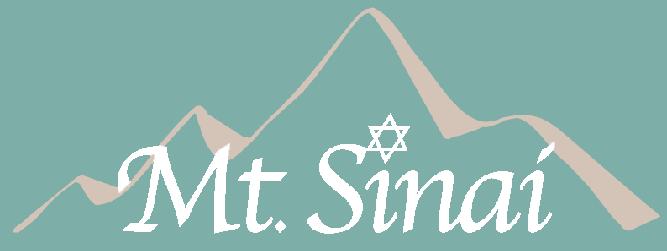
“From this Benjamin, it’s not about the Benjamins,” Netanyahu said. “The reason Americans love Israel is not because they want our money, it’s because they share our values. It’s because America and Israel share a love of freedom and democracy.”
Netanyahu was scheduled to be at the conference Tuesday morning to deliver his remarks, but he returned to Israel after a direct hit from a rocket injured seven Israelis, including two toddlers, in a house outside Tel Aviv. On Monday evening, Israeli aircraft struck Hamas targets inside Gaza.
The prime minister is also in the midst of one of his most difficult re-election bids since he returned to office in 2009, as he faces indictment for a bribery scandal following a two-year investigation. One of Netanyahu’s strongest challengers, the Blue and White Party chair Benny Gantz, a former Israel Defense Forces chief of staff, addressed the AIPAC conference Monday morning. He spoke at length about his time as a general in Israel’s army, vowing to maintain Israel’s military dominance and to protect the Jewish state from a hostile Iranian regime. He also told of how his mother survived the Bergen-Belsen concentration camp in Germany during the Holocaust.
But while he commended Netanyahu for returning to Israel, he also barbed the sitting prime minister for his recent decision to bring the far-right nationalist party Otzma Yehudit into his coalition.

“There will be no Kahanes running our country,” he said, referencing the fact that Otzma Yehudit is regarded as the evolutionary offspring of the banned Kahane Chai party. “There will be no racist leading our state institution, and there will be no corruption leading our way, no corruption whatsoever. The leaders of Israel cannot be led by anything else
other than the best interest of Israel and its people.”
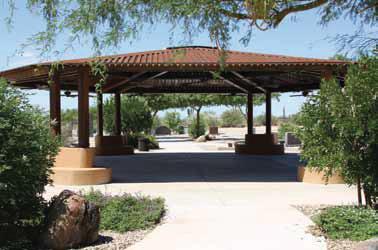

While Netanyahu faces increased scrutiny in Israel, U.S. Vice President Mike Pence used his address at the AIPAC gathering to celebrate the conclusion of another high-profile investigation, this one in Washington. Days after Special Counsel Robert Mueller finished his investigation into Russian interference in the 2016 election and possible obstruction of justice committed by the Trump administration, Pence claimed that President Donald Trump was completely exonerated.

“I just have to say, yesterday was a great day for our country, our president and every American who cherishes the truth,” Pence said Monday. “After two years of investigation and reckless accusations by many Democrats and members of the media, the special counsel confirmed what President Trump said all along: There was no collusion between the Trump campaign and Russia during the 2016 election, and the attorney general confirmed there was no obstruction of justice.”
In his report, Mueller reportedly left the question of obstruction of justice up to Attorney General William Barr, but did not clear the president of any wrongdoing.
Trump is widely popular in Israel for moving the U.S. Embassy from Tel Aviv to Jerusalem and is seen by many as a natural ally of Netanyahu.
Echoing that theme, Pence celebrated another recent foreign policy reset. Last
week, Trump became the first U.S. president to recognize Israel’s authority over the Golan Heights, a contested area at Israel’s border with Syria that Israel captured in 1967 and annexed in 1981, a move condemned at the time by the United Nations. Trump signed an executive order to that effect on Monday in the presence of Netanyahu.
“Our president made these decisions in the best interest of the United States, but he also believed they were in the best interest of peace, because a lasting peace can only be built on the foundation of truth,” Pence said, before blaming the lack of movement on a peace process during the Trump administration on Palestinian aggression.

For Pelosi, the ultimate message of the conference was that Democrats remain committed to American support for Israel, and that the issue of Israeli security and prosperity should not be one subject to partisan disagreement.
Democrats in Congress have accused Republicans of trying to make Israel a “wedge” issue through legislative tactics and public statements, but Pelosi promised that support for Israel will always be strong in her Congress.
“From Israel’s founding through the present day, our pledge remains the same. Israel and America are connected now and forever,” Pelosi said. “We will never allow anyone to make Israel a wedge issue. That pledge is proudly honored in this Congress where support for Israel remains ironclad and bipartisan.” JN
 NICK ENQUIST | STAFF WRITER
NICK ENQUIST | STAFF WRITER



ATempe woman has decided to move out of her apartment complex after the word “kike” was painted on the side of her car after a parking dispute.
A.T., a Jewish woman who requested a pseudonym in fear of retaliation from the vandal, has a designated parking spot at an apartment complex in west Tempe near Chandler. On Feb. 22, a white Kia Optima was illegally parked in her spot and the apartment management company had the car towed. Later that day, her neighbors notified her that her car had been defaced. In addition to the slur, her tires were slashed, there were traces of garbage on her car and her Israeli stickers were torn off.
“I was so afraid that I told my husband that we needed to leave and we called my mother-in-law to stay with her,” A.T. said. “We packed up everything and our baby





and left, because I was afraid that they were going to come into our apartment and hurt us.”
Tempe Police Department officers were provided a description of the alleged vandal by the apartment security guard. A.T. also posted that description to the neighborhood app Nextdoor, which drew a response saying that a man matching the same description with the same car broke a window and slashed the tires of another car in Tempe a few weeks earlier.
Tempe police Lt. Michael Hayes said that a new detective, who specializes in hate crimes, has been assigned to the case. He also added that Tempe police officers are encouraged to attend different religious community events not only to provide security but also to “be a part of the larger religious community.”
Sylvia Moir, Tempe’s chief of police,




received the George Weisz AntiDefamation League Law Enforcement award in November. Moir, who’s been chief since 2016, was honored for her respectful and earnest approach to policing, according to regional ADL director Carlos Galindo-Elvira.

“We are taken aback by the shocking hate incident in Tempe,” Galindo-Elvira said. “We’re calling for the responsible individual to be held accountable to the fullest extent of the law.”







This incident comes a little over a month after the posting of anti-Semitic flyers near Skyline High School — the first recorded anti-Semitic incident in Arizona in 2019. The last anti-Semitic incident logged for the state by the ADL in 2018 was an act of vandalism at Lake Havasu City’s only synagogue, Temple Beth Sholom. JN
Phoenix-based travel photographer
Matt Cohen is not only working to make sure the Holocaust is not forgotten, but also that other genocides will be remembered as well. In his latest exhibit at Scottsdale Community College (SCC), Cohen showcases a series of photos in locations that are significant to both the Holocaust and the Armenian genocide.
“I was curious about the Armenian genocide because there’s a lot of controversy around it,” Cohen said. “There are whole nations that deny it happened and in our case, [for] the Jewish people, there are a clique of racists that say the Holocaust didn’t happen and call it a hoax.”
Cohen’s exhibit of more than 20 photos are at SCC for its annual Genocide Awareness Week, which begins April 15. The exhibit, in the Student Center Lobby, is free. The photos will be on display until April 20, when Genocide Awareness Week ends.
The photo essay consists of images of key locations where the Holocaust and the Armenian genocide took place. Cohen said that the inspiration for the
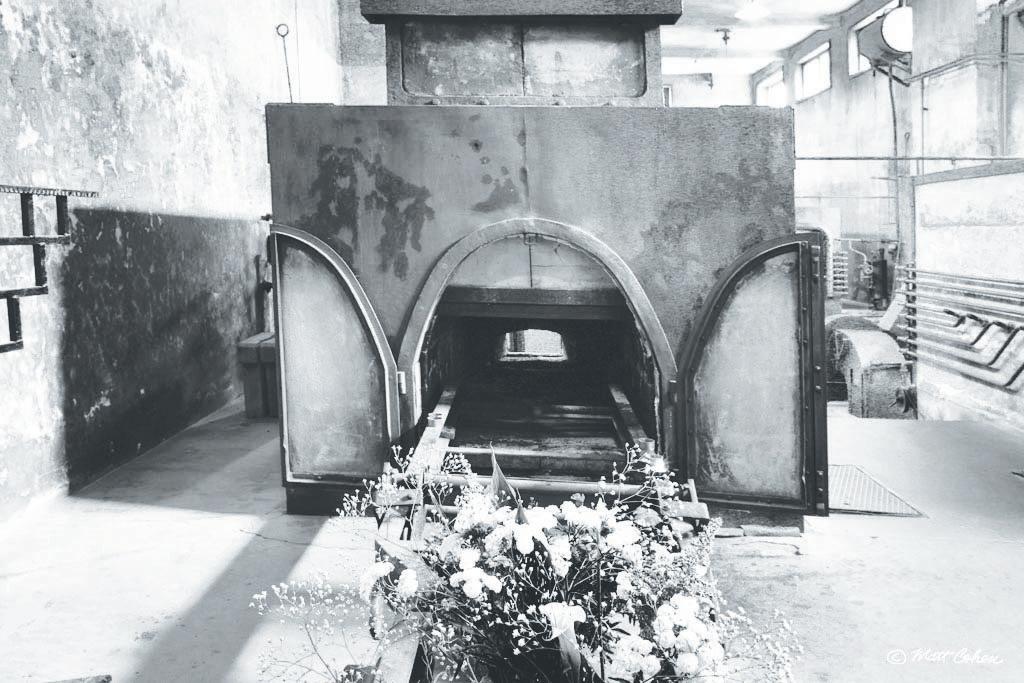

photos was “to record history as a remem brance project and mitzvah, allowing the memories to be shared with others.”
The Holocaust photos are all in black and white, while the photos in Armenia are in color. The black and white is meant to evoke a dynamic and Gothic look, Cohen said, while the Armenian photos are in color to show the details of each landmark.
Some of Cohen’s favorite photos in the exhibit are of Oskar Schindler’s enamel factory in Krakow, barracks in the Auschwitz concentration camp and the Khor Virab Monastery at the foot of Mt. Ararat.

Taking photos in some of these places presented many challenges. Cohen trav eled to each location with the help of guides, but spent long hours in the car searching. The biggest difficulty was getting the right shot — sometimes the places he found just weren’t right to photograph.
“I found it photographically challenging, because there’s not a lot in those areas anymore,” Cohen said. “Most of the Jewish ghettos are stucco condos. There were a ton of people touring Auschwitz and I really didn’t want any of them in my photos.”
John Liffiton, director of Genocide Awareness Week, said he always tries to have two educational exhibits. He thought the photo essay was a good complement to the multimedia exhibit “Filming the Camps, From Hollywood to Nuremberg: John Ford, Samuel Fuller, George Stevens.”
That exhibit — the largest in the sevenyear history of Genocide Awareness Week — takes up more than 2,000 square feet and has multiple screens featuring information on the filmmakers and how the Holocaust influenced them. Liffiton felt that displaying Cohen’s photos, which he called “exquisite,” next to that would be something that viewers could easily digest. He wanted “something a little bit lighter that could also work with the larger exhibit and still have a strong visual imagery.”
Liffiton felt that there was a strong connection between the two genocides. But he also said that the Armenians would benefit from gaining more exposure for their tragedy. He added that a benefit of Genocide Awareness Week is being able to bring light to other genocides that aren’t as well known as the Holocaust. “There’s sadly no shortage of material,” he said.
This year’s Genocide Awareness Week has multiple speakers and panel on different genocides. The opening night features Rwandan genocide survivor and author Clemantine Wamariya.
Cohen will travel to Rwanda next year to document some of the areas that were affected by that genocide. JN
 NICK ENQUIST | STAFF WRITER
NICK ENQUIST | STAFF WRITER
For 40 years, Holocaust survivor Eva Schloss did not speak about her war time experiences. “I didn’t talk to my family — or to anybody for that matter.”
But the 89-year-old made up for lost time; since 1985, she has given more than 1,000 speaking engagements and has writ ten three books.
This month, Chabad of the East Valley welcomed Schloss at the Chandler Center for the Arts as part of her 18-city U.S. tour.
Rabbi Mendy Deitsch, co-director of Chabad of the East Valley, said having Schloss speak right now is critical because of the rise of anti-Semitism and the worry that people could become complacent.
“I think this is why it’s so important to have a speaker who experienced it, because she educates the next generation so they can understand its real impact,” he said, adding that many knew what was going on during the Holocaust and chose to do nothing.
Schloss spoke about how powerful Nazi propaganda was and how quickly it could influence others. Ironically, just a few weeks prior to her Arizona visit, Schloss spoke to a group of teens in Newport Beach, California, who had attended a party where red plastic cups were shaped into a swastika. Photos of the teens giving the Nazi salute had been shared on social media.
Schloss said that the teens apologized profusely when she met with them and she believed that they had all learned a lesson.
Families are planning celebrations and they need your help! Don’t miss the opportunity to showcase
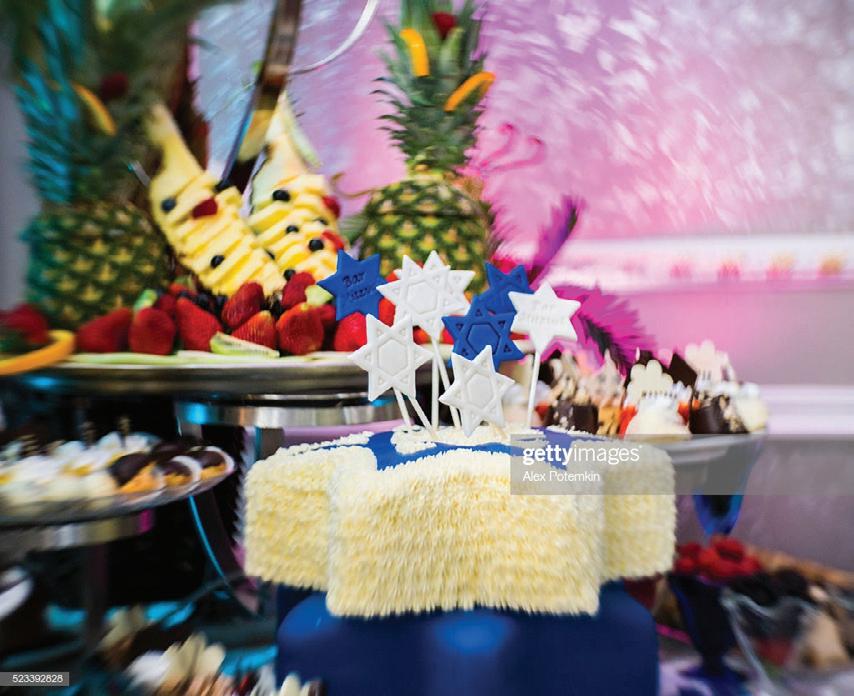

The Chandler event included a musical performance by violinist Moshe Booksban, remarks from the vice mayor of Chandler, Terry Roe, and a short statement from talk show host Seth Leibsohn.
Shternie Deitsch, co-director of Chabad of the East Valley, moderated the event.
Schloss was born Eva Geiringer in Austria and immigrated with her family to Amsterdam in 1938. There, at 11, she met Anne Frank, who was the same age. The two became fast friends.
In 1942, both girls’ families went into hiding from the Nazis. Schloss recounted numerous close calls from that time. After a
double agent betrayed her family in 1944, they were taken to Auschwitz-Birkenau Nazi concentration camps. Her father and brother did not survive Auschwitz, but she and her mother, Elfriede, were liberated in 1945 by Soviet troops.
After the war, Schloss moved to England to study photography, and met her future husband, Zvi. At the same time, her mother and Otto Frank, Anne’s father, married. Schloss, her mother and Frank worked to get Anne’s diary published.
Schloss’ talk was complemented by an exhibit in the lobby of the arts center, where there were several works by artist Helen Hana Weisman. The daughter of Holocaust survivors painted several haunting images in harsh black and white tones. A book of photographs called “Das Ghetto” inspired the paintings as well as Weisman’s artistic career.
The event was almost at full capacity with audience members who’d come from all over the Valley. Many were from different backgrounds and religions, and they all listened intently to Schloss’ story.
Deitsch was impressed by the size of the crowd, and was especially happy to see so many young students and children in the audience.
“My goal is to empower people and to recognize that through positive action, they can create positive change,” Deitsch said. “Positive actions do make a difference in this world and can change the dialogue in a healthy and fresh way.”

Some kids spend their time playing the latest video games or signing up for sports, but 11-year-old Levi Don is using his time to raise money for the New York-based company Innovation: Africa.
“I’m working with Innovation: Africa to bring Israeli solar technology to African villages in need,” said Levi in a video on gofundme.com. “The benefit of having solar technology is being able to pump clean water throughout the villages instead of having to travel miles to find dirty water.”
Levi, who is a congregant of the New Shul, began his crowdfunding campaign in February with the help of his parents, Rachel and David Don, as an early bar mitzvah project. Seventy donors helped the Scottsdale family reach their local goal

of $3,600, all of which will be directed to Innovation: Africa.
Levi wasn’t expecting that they would raise the money so quickly, but when he saw that they had reached their goal, he was very happy.
Africa has been the young fundraiser’s dream vacation since he was younger. He is obsessed with all things Africa, and has some family history on the continent: His father was born in South Africa. In third grade, he worked on a yearlong project focusing on Botswana.
This campaign is not the first time Levi has worked to raise funds for an African nation.
“A couple years back, I tried making
And did we mention the lap of privacy, too? Those folks that say “you can’t have it all” surely haven’t seen the Casitas at Maravilla Scottsdale retirement resort.

The Casitas are 1,750 to 1,900-square foot homes with their own, private garages in a European motor court design. They have brick pavers on the outside and all the luxury you can imagine on the inside.
The Casitas give you privacy. And the retirement resort of Maravilla gives you everything else – socializing, fine dining, a central clubhouse, world-class pool and spa, and more. Much more. The lap of luxury indeed.

Come see for yourself. Call 480.269.1952 to schedule your private tour today.

There is little question that AIPAC has an extraordinary record of success in promoting the U.S.-Israel relationship. And the rising number of participants of all ages, colors, faiths and political stripes in AIPAC’s yearly Policy Conference — more than 18,000 gathered this week in Washington, D.C. — reflects the popularity of the pro-Israel agenda and a giant embrace of what is universally recognized to be one of the country’s most effective political organizations. But despite all that success, there is a strong sense that AIPAC has an image problem — even if caused by events that are largely out of the organization’s control.
First came the ascendancy of three remarkably anti-Israel progressives to the House of Representatives in the 2018 election, and the varied responses to some of their more offensive pronouncements. Second, there have been mixed reactions to what are seen as one-sided Israelrelated declarations and policy pronouncements coming from U.S. President Donald Trump. And third, there has been increasing discomfort with certain policies and positions taken by Israeli Prime Minister Benjamin Netanyahu and his rightwing coalition government — all on the eve of Israeli elections scheduled in less than two weeks.
Somehow, that all became AIPAC’s problem. One almost got the sense that the organization was being criticized for doing its job too well. So when MoveOn called on the 2020 Democratic presidential contenders to boycott the AIPAC gathering — an event in a non-election year to which very few of them had even been invited — the fact that some of them were ready to stand on the anti-AIPAC side was disheartening, and only sharpened the perceived domestic political divide and finger pointing that has plagued our country’s political reality.
AIPAC is really good and remarkably effective, but not perfect. That said, our critique has more to do with the organization’s slow pace of adjustment than with its fundamental goals and positions. AIPAC’s mission is straightforward: to strengthen, protect and promote the U.S.-Israel relationship in ways that enhance the security of the United States and Israel. Who can argue with that?
As a bipartisan organization, however, AIPAC must strive for neutrality — and the appearance of neutrality — in U.S. politics and in Israeli politics. But even though AIPAC doesn’t decide who will lead either government, critics have focused on AIPAC’s unyielding support for Netanyahu and on its domestic embrace of the Republican Party and perceived distancing from the Democrats.
Some will say that these challenges are simply the reality of today’s toxic political environment, and that AIPAC should just continue doing what it’s doing so well, stay focused on its mission and let the chips fall where they may. We think that is a mistake. We hope that AIPAC will consider ramping up its public relations game and burnish its strong bipartisan credentials and bipartisan support in both Washington and Jerusalem.
Above all, AIPAC deserves our continued support, and needs to do what it can to help make that possible.
Letters must be 200 words or less and include the writer’s full name, address and phone number or email address. Letters are edited for content, style and space. Send your letters to Editor, Jewish News, 12701 N. Scottsdale Road., Suite 206, Scottsdale, AZ 85254; email letters@jewishaz.com.
When word got out about the horrific March 15 Christchurch mosque shootings in New Zealand that left 50 dead and 50 more injured, the reaction in the United States was predictable. Messages of condolence were issued, mixed with healthy doses of anger, emotion and righteous proclamations that “something needs to be done.” Granted, those are appropriate responses, but is there anything more clichéd these days than the “thoughts and prayers” mantra that gets offered every time there’s a mass shooting or some other tragedy?
In a promising break from the predictable, something different appears to be happening in New Zealand. That something is change.
“Our gun laws will change, now is the time. ... People will be seeking change, and I am committed to that,” New Zealand Prime Minister Jacinda Ardern said. “There have been attempts to change our laws in 2005, 2012 and after an inquiry in 2017. Now is the time for change.” And lest you think Ardern
was blowing smoke, she announced a ban on semiautomatic rifles on March 21, pledging to have legislation in place as soon as April 11.
We understand that good intentions don’t always produce good results, but it seems clear that change of some sort will occur in New Zealand — and soon.
Compare that to the United States, where we have a tragic history of mass shootings, and nothing much has changed.
Columbine. Virginia Tech. Sandy Hook Elementary School. San Bernardino. Orlando. Las Vegas. Sutherland Springs. And the pain is still raw from the Tree of Life synagogue shootings in Pittsburgh a mere few months ago. In all, there have been 15 shootings since Columbine, where at least 10 people were killed, not to mentions countless other incidents with casualty counts that were “only” in the single digits.
Which begs the question: What will it take to prompt change in the United States?
If there was ever a time
ful leadership on gun control for our country, that time is now. We cannot continue inaction and politics as usual. We need principled leaders who are committed to saving lives, and who are willing to stand up to the National Rifle Association and other gun advocates to champion meaningful and effective gun control.

The U.S. constitution is a living, breathing document. Our Founding Fathers weren’t thinking about the potentially murderous plague of semi-automatic rifles when they crafted the Second Amendment. Besides, the right to bear arms can be assured even if weapons designed to inflict maximum damage in a short period of time are banned. Hunters will still be able to stalk deer and other game, and those who feel they need a firearm for protection will still have options.
The answer to solving the U.S. mass shooting problem is simple. For those leaders who can’t figure it out, we suggest that they call Jacinda
Long before social media, texting and phone calls, we had regular face-toface conversation. The stakes were high with face-to-face conversation because substantial disagreement could lead to physical altercation. Those involved in conversation would attempt to measure their words and strive to reach an amenable conclusion. Handshakes and kisses and hugs might even conclude the dialogue.
Two sages were exemplary of such interaction. Abaye and Rava lived nearly 1,700 years ago in ancient Babylonia. They knew each other’s likes and dislikes and even one another’s way of thinking and philosophical outlook on life. Still, the two sages disagreed on almost everything. In fact, the Babylonian Talmud preserves each of their disagreements, and with six exceptions, the opinions of Rava were always the accepted conclusions. And yet, there was never bitter discourse or a broken relationship.
Why? One might consider part of one of Abaye’s favorite maxims: “One should
always strive to be on the best terms with their siblings and their relatives, and with all human beings, irrespective of faith background, in order that one is both beloved above and below.”
But that is not really what I think compelled the civility between the two. Abaye regularly had his children in mind: “What is heard from a child’s mouth in the street is merely a repetition of what the child has heard from their parents.”
Abaye (actually a nickname, meaning little father) was worried about how his children might emulate his actions, his words, his composure. How could he rear his children to be deferential and humble if he was not? How could he speak truth to power by overpowering what he speaks? This is what strikes me as not only fascinating, but all the more poignant today.
I want my children to know that I speak up and out for what is important to me, what I believe will help shape the world in which they will grow. But I want them to know I do so with open candor and respect. I do so not with
angry emails or screeds left on Facebook or Twitter. I do so with open and honest attempts at dialogue. And as best as I can, I seek the face-to-face.
That is one thing that is terribly wrong with society today. We simply yell — and often in the virtual and digital space. And that’s on both sides of the political aisle. We may have a reflex to respond right away and just “get the words out,” but that eventually amounts to direct and indirect attacks on each another. It does not effect change, and actually serves as a catalyst for the same reactions in those (like our children) who might be listening.
Instead, we can channel our reactions to face-to-face engagement by openly and directly reaching out to our elected officials. We can sit down together and dialogue. We will still have our voice heard, and in some cases, we may even come away with our opinion slightly changed.
Because relationships matter — irrespective of whether we agree or disagree. We can participate in a world
Throughout my career, I have been a practitioner of public diplomacy. I did so as a press officer for the Consulate General of Israel to the Southwest, directing media and public diplomacy outreach across a five-state region during the Second Intifada and Gaza Disengagement. More recently, I have run State Department cultural diplomacy programs all over the world.
With the rise of anti-Semitism and incidents like the Unite the Right Rally in Charlottesville, I decided to change my public diplomacy focus and get
involved in domestic, communal public diplomacy on behalf of the American Jewish community.
I am grateful for the opportunity to conduct communal public diplomacy on behalf of the Valley’s Jewish community as the new executive director of the Jewish Community Relations Council of Greater Phoenix (JCRC).
Yet, what is public diplomacy and why does the Jewish community need to engage in it?
Public diplomacy differs from traditional diplomacy. Traditional diplomacy consists
of high-level communications between governments, while public diplomacy is how countries and communities communicate their policies, culture and values to the outside public. In order to create relationships that will benefit the Jewish community, we need to engage in public diplomacy.
Public diplomacy represents the intersection of policy and communication, and is conducted domestically through the following elements: listening, advocacy, cultural diplomacy, and community media.
where those with whom we dialogue are not threatened by us and we are not threatened by them.
Knowing such discourse is a real option allows me to act and speak civilly, to keep from “acting out” on social media, even when I really want to. Knowing that my children will be learning from my actions, knowing that others will see this as an example, I realize my deepest goal is not simply for me to shout and have no one listen. My goal is to make a difference and leave the world in a better place than I found it. Abaye and Rava did just that.
Today, in such a divisive world, we might jump to the conclusion that Abaye and Rava would end up buried on opposite sides of the Earth. Not so. Traveling to Israel today, one can visit the final resting place of both, buried in the same cave. The way they lived is how they rest for eternity. We should only be so lucky. JN
First and foremost, the key to good public diplomacy is listening. The act of listening is an attempt to understand our environment by collecting information from partners in the community and outside it. Through listening to our community partners, the Jewish community can advocate with a more cohesive voice to the general community; by listening to other communities and understanding their issues, concerns and values, we can create stronger partnerships SEE
PARASHAT SHEMINI,
This Shabbos we read the weekly Torah portion of Shemini and Parshas Parah, which discusses the laws of one that becomes impure from contact with a corpse and the method for becoming pure once again.
Additionally, this Shabbos we bless the new month of Nisan, which begins the following Shabbos. Our tradition has taught us that throughout Jewish history there have been nine red heifers and that a 10th one will appear during the time of the Mashiach, the future redemption when the third temple will be rebuilt in Jerusalem. What is so special about the red heifer that it is deserves its own Shabbos? One possibility is its message of hope.
The concept of hope is central to the Jewish people. Not only do we announce our hope that the Messiah will come on a daily basis, but even Israel’s national anthem is called Hatikva , meaning, “The Hope.” I see so many patients in hospitals around the Valley who have high hopes for health, life and some sense
of normalcy. Rabbi Yosef Dov HaLevi Soloveitchik zt”l explained in discussing Parshas Shemini that there are two defining aspects of the Jewish people.
The first is our ability to start over anew notwithstanding the fact that previous attempts have not panned out.
The second is our great patience and ability to continually dream even though our aspirations may seem distant and their fruition doubtful.
It is not by happenstance that these sections of the Torah appear and are read so close to Pesach. Pesach exemplifies these concepts — looking to the future and dreaming about leaving Egypt and its confines — both physically and spiritually. On the seder night and throughout the holiday we have countless customs and
rituals meant to take us back in time to relive our bondage and freedom from Egypt, but these memories also propel us to be forward-looking as well.
There is an anecdote told about Rabbi Yehoshua Leib Diskin zt”l who lived in Jerusalem towards the end of the 19th century. One morning he was to be picked up from his home by one of his students and escorted to his synagogue. When the rabbi emerged from his home, instead of going towards the student, he started to ascend the steps of his building. The student could not understand where his rabbi was headed. Moreover, it seemed that Rabbi Diskin was looking for something in the distance from his higher vantage point.
After a while, the rabbi returned and was prepared to head towards the synagogue. The perplexed student asked the rabbi what he had been searching for. The rabbi responded that although the first two Temples were manmade and had to be built during the day, the third one is to descend from heaven, and
MAR. 29 - 6:28 P.M.
APR. 5 - 6:34 P.M. SHABBAT ENDS
MAR. 30 - 7:24 P.M.
APR. 6 - 7:30 P.M.
this can happen even at night. He was therefore looking to see if the prayers of the Jewish people had been answered the previous night!
So much of our lives is spent on personal prayers and hopes just as a person who becomes impure, looks forward to the process of the Parah Aduma to return him to a state of purity. But we should also understand from this week’s double Torah reading that there is a national component to our hope and that we should keep these thoughts in our minds throughout our daily lives. This is the special connection between these Torah portions and the time of the year that they fall out in — between Purim and Pesach, both holidays that focus on the unity, redemption and hope of the Jewish nation. JN
and coalitions. As I get to know my new Phoenix home, I am on a listening tour to learn the values, interests and perspectives of our community. I invite the community to share perspectives with me.
The second element of public diplomacy is advocacy. Advocacy is how we actively project and communicate our policies, values and interests to the greater public. This is done through media and social media engagement, and through direct engagement with civic and community leaders, interfaith partners and elected officials. This includes both advocacy on behalf of the Jewish community’s interests and promoting Israel in her quest for peace and security.
The third element of public diplomacy is cultural diplomacy. This is the use of
cultural intangibles such as art, music, food and dance to foster a tangible connection with other communities to help them better understand our history and culture. This includes projects such as the JCRC’s Multi-Faith Music Concert, the Greater Phoenix Jewish Film Festival, the Jewish Federation’s Violins of Hope
Finally, there is community media. Community media includes outlets like the Jewish News. Community media is a vital resource of communal public diplomacy because these are outlets where we can share our community’s stories in ways that the general media cannot.
brought together more than 1,200 attendees, including more than 70 faith leaders from various denominations and traditions.
program and intercultural programs like the BBYO Global Shabbat. Fostering cultural exchange between the Jewish community and the diverse Phoenix landscape helps to connect us and leads to mutual understanding.
The culmination of such public diplomacy outreach can be witnessed in programs such as the communitywide vigil co-organized by the JCRC following the Pittsburgh synagogue massacre in October. The memorial
The JCRC’s work to project the policies, culture and values of the Greater Phoenix Jewish community internally and externally will ultimately help protect and strengthen us. Using communal public diplomacy, we will seek to create more cohesive communication within the Jewish community and create greater partnerships and coalitions with our neighbors. Through communal public diplomacy, we will seek to create better communal communications and foster greater understanding as a means to counteract anti-Semitism. JN
Paul Rockower is the executive director of the Jewish Community Relations Council of Greater Phoenix. He can be reached at paul.rockower@ jcrcphoenix.org. For more information on the JCRC, visit jcrcphoenix.org.
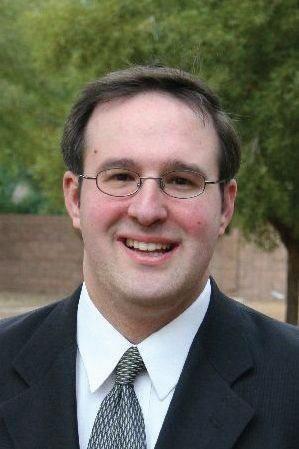
A B B I A M I C H A I
L A U - L A V I E
n t e r r u p t i n g t h e
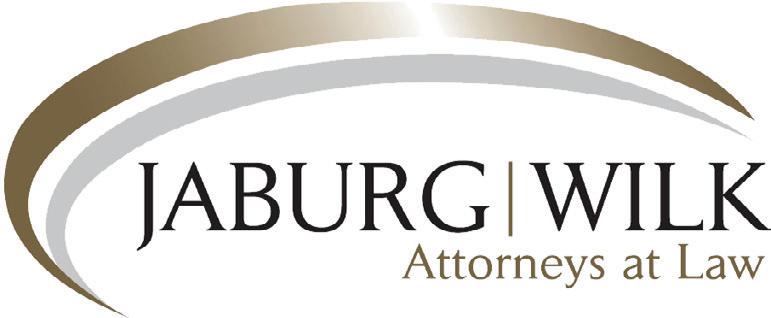

B i b l e : F i v e T o o l s t o

R e i n v e n t t h e
J e w i s h S t o r y





Baseball might not be the first thing that comes to mind when you think of Israel, yet a documentary last year set out to change that, profiling a number of skilled ballplayers.
Team Israel’s surprising run to the semifinals in the 2017 World Baseball Classic, where the team beat top-ranked squads from the Netherlands, South Korea and Taiwan, was the subject of the August 2018 documentary “Heading Home: The Tale of Team Israel.”
Now, as Team Israel gears up to qualify for the 2020 Olympics, cameras and
the Israeli name on my chest.”
Katz, a natural righty who pitches with his left hand, began playing baseball when he was 4 or 5 on a Little League team. A few years later, he began pitching, playing on travel teams and for his high school, and then college and professional teams. At the end of day, for Katz the goal is to win.
“Winning is definitely everything, you don’t play the game to lose,” he said.
Matt Wasserlauf, executive producer of “Heading Home 2,” stayed up “into the wee hours of the night” glued to the


producers will be following the team to chronicle their journey in a forthcoming documentary, “Heading Home 2: The Return of the Mensch.” The second film will follow both new and old faces as 10 Jewish American baseball players become dual American-Israeli citizens in order to compete.
While the World Baseball Classic only requires that players be eligible for citizenship in the country for which they play, Olympic rules require that athletes be citizens of the country they are representing.
Pitcher Alex Katz grew up in Long Island, New York, but is now a dual citizen. Katz previously played for the Baltimore Orioles’ minor league teams. He’s ecstatic about his new dual citizenship.
“It’s an amazing feeling,” Katz said. “It means the world to me to be an Israeli and even more to play with the Israeli flag and
television watching Team Israel’s success during the World Baseball Classic.
“They had this improbable run,” Wasserlauf said, recounting their wins against Cuba and the Netherlands, and a number of games that no one thought they would win.
For Wasserlauf, the story of Team Israel has the potential to bring a positive light to both Jews and Israel in the media. Wasserlauf believes the story of the underdog emerging triumphant will overpower the potential negative responses from anti-Semitic or antiZionist angles.
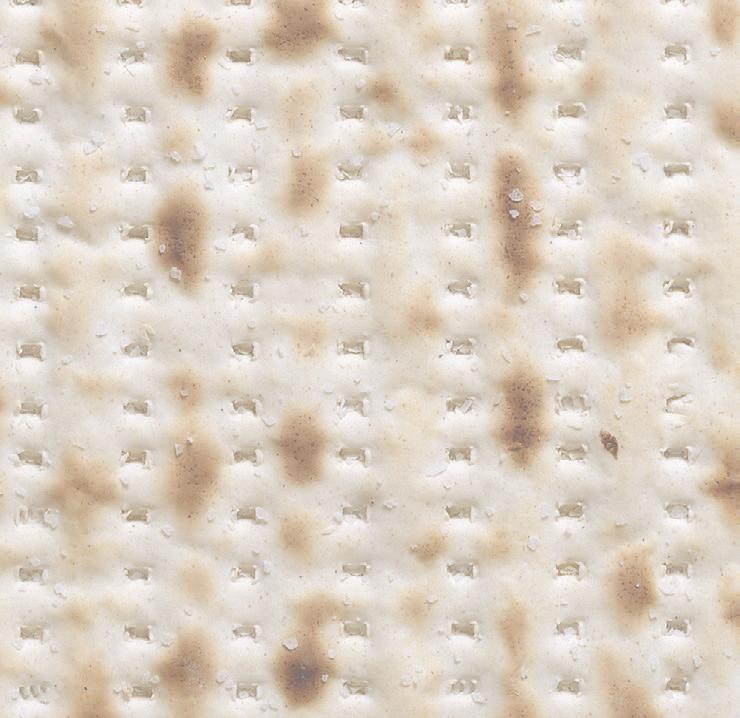
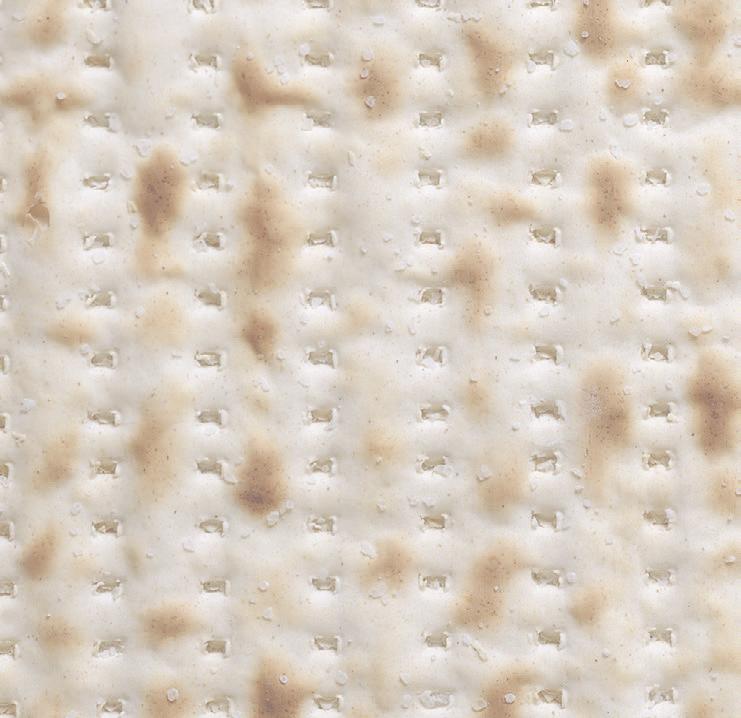
“The message that comes out is that wonderful things can happen if you apply yourself and you work hard,” Wasserlauf said. “At the minimum, I hope we raise some interest and eyebrows and that people are looking at Israel and Jews in a new light, in a different light than they had before.” JN


I’m having a love affair with grapefruits. This time of year, when so much produce is in hibernation, citrus fruits are at their peak. My current obsession honors this juicy orb, long marginalized as a diet food for women to eat daintily for breakfast with a serrated spoon. No longer.
These days, I am guilty of peeling a giant pink grapefruit and eating it over the sink as the juice drips messily down my chin and arms. But this is not a practical or civilized way to enjoy this underrated fruit. I have been using grapefruits in cocktails, salads and even to brighten up fish and chicken for dinner.
Use a modest bottle of bubbles for this; if you have really expensive champagne, don’t mix it with grapefruit juice, no matter how delicious it is.
½ cup sparkling wine such as cava or prosecco.
½ cup fresh squeezed grapefruit juice
Pour the grapefruit juice into a champagne flute. Top with champagne.
PALOMA
Makes 1 cocktail
This is a twist on the classic margarita. Grapefruit gives it a burst of freshness and oomph for times when you want a little something different.
Kosher salt to rim glass
Grapefruit or lime wedge to rim and garnish glass
1/3 cup fresh squeezed grapefruit juice
tablespoon fresh squeezed lime juice
teaspoon simple syrup or agave syrup — or more to taste (see note)
¼ cup good quality white tequila
Pour the kosher salt onto a saucer or plate. Rub the rim of the glass with lime or grapefruit wedge (reserve for garnish). Dip the rim of the glass into salt on a plate and rotate a few times to get the salt to adhere to the glass. Set the glass aside and make the drink. Mix the juices, tequila and syrup well. Pour them over ice into a prepared glass and enjoy.
GRAPEFRUIT MIMOSA

Makes 1 cocktail
Brunch will never be the same. Not that there’s anything wrong with the classic mimosa of orange juice and sparkling wine, but the slightly bitter tang of the grapefruit adds a bit more complexity and sophistication. Use fresh-squeezed pink grapefruits for best results. The pale pink color is just beautiful.
Note: To make simple syrup or agave syrup, mix equal parts sugar and water or sugar and agave. Heat the mixture in a small saucepan until melted. Remove the syrup from the heat, cool and use as desired to sweeten drinks.

This was an improvised salad when I opened the fridge and found my produce drawer rather sparse. The sharp freshness of the grapefruit marries beautifully with the creamy avocado; the briny
saltiness of the parmesan cheese and the crunch of the cashews deliver the perfect complements.
Because the salad has so much flavor, the dressing doesn’t need much of anything. As a result, this dish has made frequent encores on my dinner table.
1 carton baby lettuce (or a head of your favorite lettuce washed and torn)
1 ripe avocado, cut in chunks
1 grapefruit, peeled, sectioned, and cut in chunks. (Prep the grapefruit over a bowl to catch the juice that drips out to use for the dressing.)
⅓ cup salted cashews
¼ cup freshly grated parmesan cheese
1 tablespoon grapefruit juice
1 tablespoon lemon juice
¼ cup olive oil
Generous sprinkle of fresh cracked pepper
Sprinkle of garlic powder, if desired
Place the salad ingredients in a large salad bowl with the cheese and nuts on top. Sprinkle the dressing ingredients directly into a bowl over the salad and toss. Serve immediately.
Makes 2/3-cup marinade; enough to
This marinade is a unique and delicious way to flavor chicken, fish or flank steak. Like the salad described above, the contrasts — salty soy, fresh, citrusy grapefruit, spicy jalapeño and ginger, and sweet honey — unite to form a wonderfully complex taste in an unbelievably simple recipe.
1 teaspoon grapefruit zest
⅓ cup fresh squeezed grapefruit juice
3 tablespoons soy sauce
⅓ cup mild flavored oil
(canola or vegetable)
1 tablespoon grated ginger
1 teaspoon chopped fresh jalapeno pepper (or the chili of your choice)
2 cloves garlic, crushed
1 tablespoon honey
Mix all the marinade ingredients together in a bowl and pour over the protein. For fish (this is especially good with salmon and tuna), marinate for an hour at most; chicken and steak can sit for 2-24 hours. JN
INNOVATION CONTINUED FROM PAGE 7
HEADLINES a website to raise money for Zimbabwe, but I never ended up finishing it,” he said. “When I found Innovation: Africa, I knew it would be perfect for me to help.”
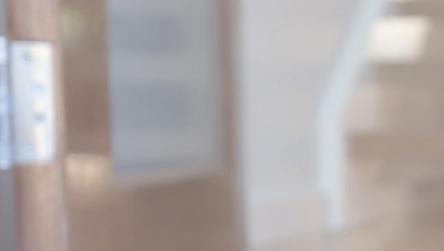
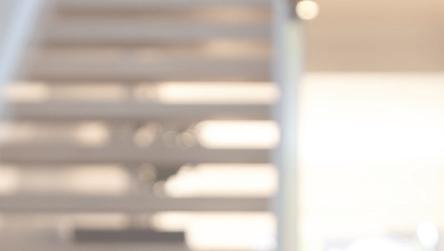
Levi is one of just four kids raising money for the nonprofit as part of a 2020 bar mitzvah project. The overall goal is to reach $18,000 between the four of them. Jack Ufberg is raising funds in Philadelphia and Yontan and Shaiya Berman who are cousins living in Israel are also raising funds.
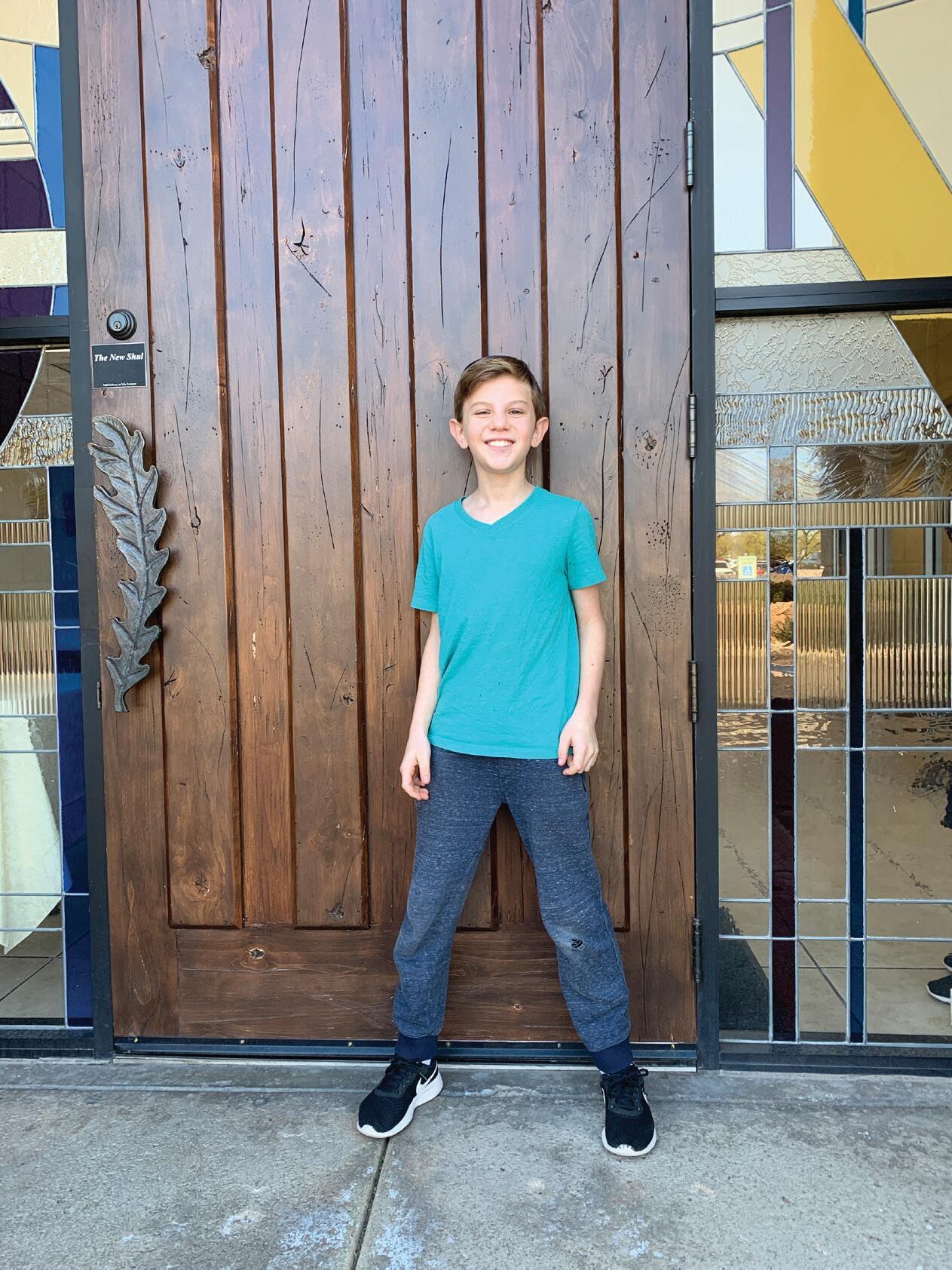

Levi’s mother, Rachel, was able to connect him with the other three kids who are dedicating their mitzvah projects to the organization. She said she felt as if the stars aligned when they started working on the project, but marketing the fundraiser has been a challenge.
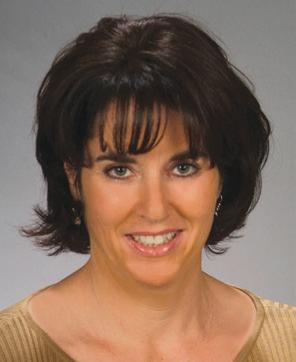
“We look at fundraising in a whole new light now,” Rachel said. “It’s not easy to ask people for money, it can be uncomfortable. I think with social media, we’re inundated to gloss over any donation requests. Trying to convey the message that this is really going to make a difference and that this is real is very challenging.”
Innovation: Africa was founded in 2009 by Israeli-born Sivan Ya’ari, who found that many African villages were experiencing poverty because of the lack of energy access.
“Because Israel is such a strong country and because of what has been invented recently, I feel that it is our responsibility to help,” Ya’ari said. The organization regularly partners with kids doing bar and bat mitzvahs.
The organization’s mission is to share the knowledge and expertise developed in Israel with off-grid African villages. The similar climate to Israel and natural resources make them a perfect fit for Israeli solar, water and agricultural technologies.

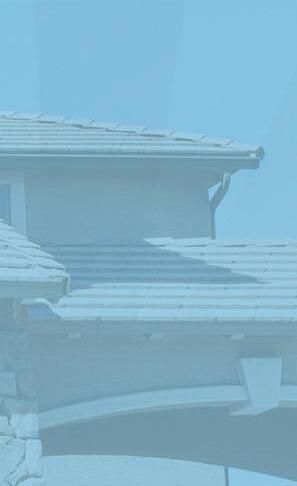
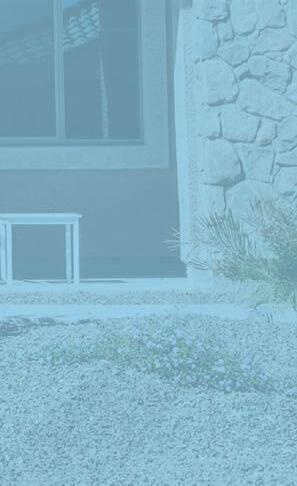

One of Innovation: Africa’s most common projects is using solarpowered water pumps and applying Israeli agricultural practices such as drip irrigation in areas experiencing drought. These solar-powered water pumping systems tap into underground water and pump up to 5,000 gallons per day into large tanks, from which the water

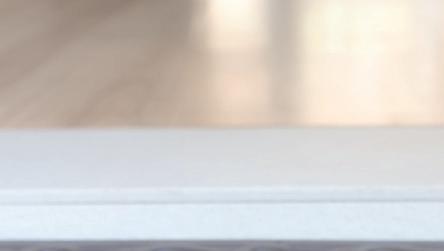

is distributed throughout a village via a drip irrigation process.



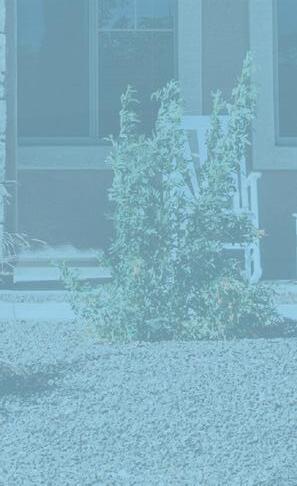




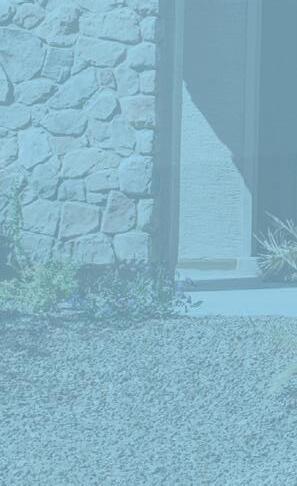
The organization has also provided lighting for schools, orphanages and medical clinics and refrigerators for vaccines. Solar refrigerators have helped more than 350,000 children get vaccines for diseases like tetanus, tuberculosis, diphtheria and measles.



The nonprofit has completed 140

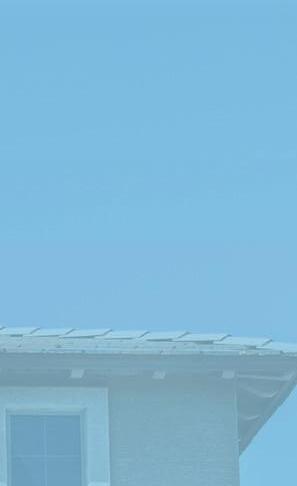



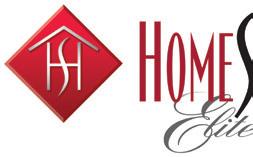

As of press time, the boys are just $100 away from their goal. Should they reach it, Levi will be invited to an African country to see how the solar panels are making a difference. The family also plans to visit Botswana when they go to Africa. Levi is beyond excited to visit the continent he’s so passionate about for the first time.
“They’re not going to tell us where we’re going until we raise the total sum,” he said. “They’re putting the suspense on us, but it just means that we have to work harder to get to that goal. And we’re so close.”JN
We asked an Arizona energy and building expert, John Wesley Miller of Tucson, to suggest eight sensible ideas for making an existing house more sustainable.
As an award-winning builder and solar pioneer, Miller has been a national leader in energy conservation and green building ideas. He also champions the concept of “universal accessibility” — building homes that are creatively designed to be user-friendly and comfortable for all, from babies to seniors as well as disabled peoples.
He’s especially well known for developing Armory Park del Sol, a community of 94 single-family homes inside a historic area in Tucson. The new houses blend historic pueblo-style design with state-of-the-art solar energy and building techniques. The homes have photovoltaic panels and solar water heaters that are unobtrusive at street level.
Here are eight ideas he suggested to us that you might use to make your own existing home more sustainable. The aim is to leave a lighter footprint on the earth and conserve natural resources.
Not all these ideas may be practical for you, but they may take you in a new direction with your home:
1. Install a solar water heater
A solar device of this kind can help pay for itself by cutting utility bills, plus a solar water heater can also qualify for good rebates from the federal and state government as well as from some power companies. Meanwhile, solar panels to power electricity in a home will not qualify for much in the way of rebates any more, Miller noted.
2. Install a solar electric system
Despite the changing picture on rebates, Miller is still a strong advocate for adding solar electricity to existing homes as well. “Solar electric technology has improved dramatically, and the panels have become much more efficient,” he said.
3. Install insulation
If you live in a concrete block home that needs more insulation, he suggests wrapping it with high R-value rigid insulation — polyisocyanurate (sometimes called “polyiso”) — on the outside. Then you can apply stucco
older houses have poorly performing windows,” Miller said. “They should be replaced with dual pane windows — two panels of glass with gas between the panels for maximum efficiency.” However, he noted that owners of homes that are significantly older and
If you’re installing a new roof, think about installing more new insulation, Miller suggests that rigid polyisocyanurate foam be installed before the new roofing is put on because of its high R-value. This is insulation that comes with a foil vapor barrier on the back and a white foil finish
6. Install a rainwater harvesting system
Install your own rainwater harvesting system so that you can conserve water for irrigation. First of all, have rain gutters put on your house that will run water off the roof into a tank located in your yard. Keep the water tank positioned slightly above ground level so that water can later be easily removed from the tank into a hose
7. Install programmable
Use programmable thermostats to monitor your heating and cooling system. “Some people find them too complex to use, but they can do amazing things,” Miller said.

8. Sustain the awareness
Be sure you maintain the “sustainability” of the culture of your neighborhood if you remodel or build a new home.
“Lots of people think of the environment and financial impact when they think about sustainability,” Miller said. “But they don’t think about the cultural impact new buildings can have. For example, don’t build an ultra-modern home in an historic neighborhood. Try to stay in concert with your neighbors’ philosophy of life.”
coating over the insulation. “That way you’ll be sealing the coolness into your home in summer and warmth into your home in winter,” Miller said.
4.
If you have older, single pane windows, replace them with dual panes. “Most
have a strong historic value in Arizona should not make changes that might violate the standards set by cities and counties for remodeling. “If you neglect the standards, you might lose the historic tax credit for your home. So check with the local historical society and city or county before changing your windows,” he said.
He also urged Arizona residents to save energy by running and walking more in addition to using public transportation as much as possible. JN
R.C.
"IF YOU HAVE OLDER, SINGLE-PANE WINDOWS, REPLACE THEM WITH DUAL PANES."Programmable thermostats "can do amazing things," says energy expert John Wesley Miller. GETTY / MAXIPHOTO









 BARBARA KAPLAN | CONTRIBUTING WRITER
BARBARA KAPLAN | CONTRIBUTING WRITER



Sometimes we need change in our homes, just for the sake of change, and those changes can be either temporary or permanent.
Change doesn’t always mean replacement. Small changes can make huge differences. You can start by taking a photograph of the space you are thinking about changing. Surprisingly, the picture will hel p y ou see things you weren’t aware of when standing in the room. The balance and relationship of your pieces to each other will be more noticeable. We often buy pieces we like without thinking how they relate to the other pieces in the room. This is a good time to look at that relationship and decide what fits and what doesn’t. The photo allows you to see your pieces as others do without the emotional attachment.
Next, rearranging furniture is a good
beginning. Look at your room and pick one thing — big or small — to move. Try it and see what opportunity opens up. Do you need to fill that space or leave it open?
You can also call an interior designer who specializes in what is called “redesign.” This redesign specialist comes to your home for a day, morning or afternoon and



pharmacist. This can be an intense process. They arrange and rearrange until the pieces you have look, and function differently than they did before. We all take what we have for granted and fresh eyes will see it in a different way. When you come home, your home will have a new appearance and feel.
exchange pieces with relatives and enjoy them without having to possess them. The same goes for accessories.
Another inexpensive way to change a room is with paint. Each room can have a face lift by selecting a color that is the common denominator to the main pieces to pull it more together. Conversely, paint an accent wall to give your pieces definition.

rearranges the furniture you already own.
It’s best that homeowners leave the premises, so they don’t have heart failure watching when the design doctor takes over. The patient (your home) is analyzed (evaluated) by the doctor (designer), and a prescription is filled by the design


If you don’t want a complete change, you can rearrange your pictures. Move the pieces from room to room. Replace with similar sizes so you don’t have to make new holes. I have exchanged art with a friend because I love some of her pieces and she loves some of mine. You can
Leaving empty spaces is OK too. Don’t fill spaces just because they are empty. Letting the eye rest in a room gives more significance to the pieces you see. The most important point is to keep what gives you pleasure and release the pieces that don’t. JN





Barbara Kaplan, IFDA and Allied ASID, is a Phoenixbased interior designer and the CEO of Barbara’s Picks, an online resource for interior design. For more information, visit barbaraspicks.com.
IT’S BEST THAT HOMEOWNERS LEAVE THE PREMISES SO THEY DON’T HAVE HEART FAILURE WATCHING WHILE THE DESIGN DOCTOR TAKES OVER.
 RUTH URBAN | SPECIAL TO THE JEWISH NEWS
RUTH URBAN | SPECIAL TO THE JEWISH NEWS


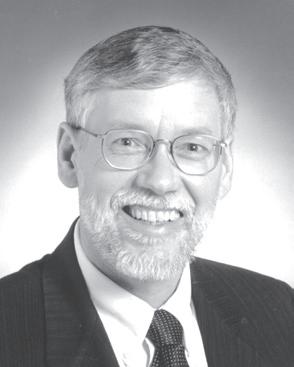
Imagining being an entrepreneur sometimes sounds like: I can set my own hours! No more job interviews! I’ll be my own boss!
With that job description, it’s a wonder that more people don’t start businesses or stay in business for very long. While there are many true benefits of business ownership, I’d like to begin by bursting some bubbles.
Yes, the number of hours you work may be under your control, but often the job consists of 12-plus hours a day, six or seven days a week at least for several years. As an owner, you often do all the work yourself or must be on sight to oversee employees. You spend the wee hours on
downs sometimes happened multiple times each week. I couldn’t understand it at all then, but now that I have my business and my clients are business owners, I realize that either he wasn’t crazy at all, or that all of us are crazy. The ups and downs are a reality of the role.
So what does the life of an entrepreneur look like? What does it take?
People start businesses for a myriad of reasons. They often have a really good idea that they are certain people will buy, or they are sure they can improve lives/ the world. They may strike out on their own if they are tired of the corporate structure or think they can do it better than their current employer. In an economic
Q: My accountant told me they may have to file an extension this year. I’ve never done this before. Why now?
A. The tax overhaul for 2018 was the most extensive in 30 years. Many IRS forms, instructions, publications, and regulations needed to be changed. This process is ongoing. Also, as of late March, Arizona tax law for 2018 is still not decided.

This means more extensions for most accountants. Note that any taxes due, and first quarter 2019 estimates, must be paid by April 15. Although the extended due date for most returns is October 15, many returns will be filed before then.
As always, consult your advisor for guidance specific to your tax and financial circumstances.
administrative tasks like handling email or doing the bookkeeping.

Sometimes people start a business because they want to make a career move but hate job interviews. The reality is that entrepreneurs are always interviewing — for the next client. My work consists of several new client meetings each week, unscheduled phone inquiries and constant networking. If you hate interviewing, think twice about starting your own business.
Being your own boss allows for a lot of freedom but can also be stressful. Prior to owning a business, I had a close personal relationship with someone who was an entrepreneur. He truly drove me crazy with the swing from optimism to pessimism. On a good day, he was going to be a millionaire; everyone loved his ideas and services. The next day, he might tell me that the business would fail, and he would be bankrupt and homeless. These ups and
downturn, businesses are born out of the necessity of supporting themselves and their families.

The big question is: Who succeeds? How do you know if you have the entrepreneurial spirit? Who is happy working in this crazy roller coaster of a world? Successful entrepreneurs have the following common traits:
• They are passionate about making things better. They strive to make their product or service better, their processes more efficient, their employees stronger and themselves more advanced.
• They are visionaries. They know where they want to go and set goals to get there. All the while, they are willing to make changes in their vision as necessary based
could use an interest-free loan for something else?
Please visit our website or contact us at the JFL office.

on new knowledge or economic circumstances.
• They listen. To employees, to cus tomers, to vendors. They look to them as trusted partners. I bought an existing business my first round as an entrepreneur. Two of three banks turned me down for business loans. That business failed in two years. Had I listened to all three of the banks, I probably would not have bought — or lost — that business and a great deal of money.
• They are open to constant learning. To keep up, one must be a student as our world evolves. There are always new laws, new technology, new certifications and new philosophies. Taking classes, attending webinars and seminars, talking to other business owners, studying competition. There is never a shortage of things to learn.
• They are positive. Entrepreneurs look at change as positive and stay
positive in light of uncertainty.
• They are risk takers. The reality of being a business owner is they often don’t succeed, often losing all that they have invested in time and money. They must be able to make decisions without fear. They must have the confidence that they can overcome failure if necessary. Resiliency is a plus. Many successful owners have failed at least once before coming up with a winner — myself included!
• They’re not defined by age. Some start in their teenage years with an instant winner. Conversely, there is no such thing as being too old. Often, that’s an advantage. Older adults have a lifetime of experience and usually the finances to sustain them.
• They have a strong bank account. Money in reserve is a huge benefit in the beginning. One can be successful without the money to invest in growth (I am), but success usually takes longer and officer salaries often are small or nonexistent for some time.
• Ready to take the plunge after this read? Go for it and get ready for the ride of your life! JN
Ruth Urban is president and CEO of On the Money LLC, a team of self-proclaimed bean counters, number crunchers and calculation nerds who are forever dotting the i’s and crossing the t’s. On the Money’s mission is to help smallbusiness owners take control of their finances by creating systems and tracking tools, then teaching them how to use those tools to make better-informed money decisions.
Randie Stein has been promoted to Managing Director at Stifel Nicolaus & Company, Inc., an investment banking and wealth management company based in St. Louis, Missouri. Ms. Stein joined the Firm’s Phoenix Public Finance Department in 2004 after spending 10 years on the Staff of the Arizona State Senate as a key financial analyst and 5 years as a public policy consultant. Randie works with all levels of Arizona municipal governments on various types of capital improvement projects funded with municipal bonds. She has expertise in school capital finance, Arizona property and excise taxation, fiscal modeling, and government budgeting.

Randie has also served appointments by three different Arizona Governors: as the Interim Executive Director of the School Facilities Board, a member of the Citizens’ Finance Review Commission and a member of the Public Safety Personnel Retirement System Board of Trustees. The Stifel Arizona Public Finance team congratulates Randie and looks forward to continued success in the Arizona Bond Market.
Q: What is Jewish Career
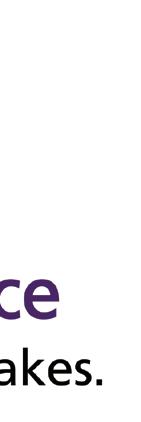
A. Jewish Family & Children’s Service (JFCS) Jewish Career Services, established in response to the 2009 recession, is a program that provides interviewing, networking, and resume-writing help to members of the Phoenix metro Jewish community who have been unemployed, for two years or less, or are currently underemployed. Since its inception in August 2011, more than 400 individuals have used the service. Feedback has been extremely positive, with participants reporting that they feel better prepared for and have greater confidence in their job search having gone through the program.
Kathy Rood Manager of Jewish Social Services Jewish Family & Children’s Service

Career coaching focuses on fine tuning an individual’s job search skills, understanding the job search process and how it works. The JFCS career coach works with clients on the interviewing process, and prepares the client to answer questions confidently, effectively and efficiently. The coach also addresses the nuances of networking which is crucial in finding quality employment opportunities. As no two clients are the same, the coach works with each individual to meet his/her specific needs in an effort to maximize their potential of successfully landing employment.
Q: How do I qualify to receive services?
A. To be a candidate for Jewish Career Services, an individual must be Jewish, unemployed (up to a period of two years), or underemployed. For those who do not qualify for the program, referrals are given to programs that better fit that individual’s needs.

How can I get involved?
All inquiries are welcome and should be made to Kathy Rood, Manager of Jewish Social Services at Kathy.rood@jfcsaz.org or (602)452-4627

Q: What is all the hype about Opportunity Zone Funds? Is the tax savings really that compelling?
A: Many have stated this program represents the greatest tax reduction opportunity of our generation. When modeled against a standard investment using the same underlying rate of return and time assumption, an opportunity zone investment produces more than 2x the net return on investment.
Q: Where did this tax reduction program come from?
Q: Who can I work with and how is my money invested?
A: While the recent buzz surrounding Opportunity Zones have spurred plans for many new Funds, there are few qualified funds open, available for investment and ready for you to take advantage of.

One option is the Caliber Tax Advantaged Opportunity Zone Fund, LP which opened in 2018 and has begun investing directly into a diversified portfolio of real estate assets in qualified zones throughout the Southwest growth markets. You can learn more about the fund at opportunity.caliberco.com
Headquartered in Scottsdale, Arizona, Caliber - The Wealth Development Company is a full-service real estate investment company specializing in commercial, residential, multi-family, self-storage and hospitality properties.

Since its inception in 2010, Caliber has more than $225 million in invested equity across the southwest with more than $375 million of assets under management. Caliber’s investment cycle is managed 100 percent in-house through its five business units: Investment, Construction & Development, Property Management, Brokerage and Hospitality. Operating under the principles of integrity, responsibility, discipline and transparency, Caliber provides its more than 400 accredited investors with well-managed, diverse, asset-based investment strategies.
A: Opportunity Zones were enacted as part of the Tax Cuts and Jobs Act passed on December 22, 2017. The driving force behind the tax code changes was to incentivize economic growth in designated communities where new real estate and businesses can thrive.
Q: Is any taxable capital gain eligible for the program?
A: Short and long-term capital gains derived from any source –sale of a business, a real estate asset, stocks you own, etc. – are eligible for the program benefits. Investors who “wait and see” on this program will miss out, as the gains must be invested within 180 days of being realized to qualify.
Keep in mind real estate investment requires the right team, an operating history, and a track record of success.
Q: Are there options for my other forms of capital?
A: Yes! Caliber has become a leader in real estate private equity investment in Arizona and can help you find the right options to grow your wealth or generate stable income from your capital. Give us a call at 480-295-7600 or connect with us on our website to setup a conversation with the Caliber team.
MONDAYS
Mahjong Mondays: 10 a.m.-12:30 p.m., East Valley JCC, 908 N. Alma School Road, Chandler. Every Monday except on Jewish or legal holidays. You are invited to come and play, no RSVP is necessary, just come. This free program is intended for players with prior experience. Be sure to bring your current mahjong card and a set if you have one.
WEDNESDAY MORNINGS
‘The News Desk’: 10-11:30 a.m., Valley of the Sun JCC, 12701 N. Scottsdale Road, Scottsdale. The class focuses on current events and is led by Dr. Michael Epner.
TUESDAY, APRIL 2
Defeat Food Addiction: 12:30-1:30 p.m., Valley of the Sun JCC, 12701 N. Scottsdale Road, Scottsdale. Join The J and Scottsdale Weight Loss Center nutrition instructors and learn about food addiction and how to identify and control your triggers, as well as how to manage lapses with confidence and compassion. J members: $25, guests: $40. SWLC members: $10. Includes a delicious, nutritious meal from milk+honey espresso bar & eatery. Register by April 1 at vosjcc.org/ fitmindbody
Terrific Tuesdays: 10-11:30 a.m., East Valley JCC, 908 N. Alma School Road, Chandler.
Speaker: Derrek Hofrichter of East Valley Krav Maga. Ages 55-plus. Suggested donation: $4. 480-897-0588 or adrian@evjcc.org
Jewish Thought in Three Acts: Creation, Revelation, Redemption: 1-2 p.m., Temple Solel, 6805 E McDonald Drive, Paradise Valley. How do we ask our most serious questions about the meaning of life and our place in the world? According to tradition, we look through our three primary stories of how we came to be (creation), who we are (leaving Egypt), and why (receiving Torah). Through these narratives, we can begin to see our way to awareness, responsibility and hope — as well as confront the darkness that arises and can be overcome in those same pivotal moments. For more information visit valleybeitmidrash.org/event/jewishthought-in-three-acts-creation-revelationredemption/
‘Social Justice, Mitzvah and God Then and Now’: 7-8 p.m., Temple Solel, 6805 E McDonald Drive, Paradise Valley. This session will explore the serious challenges raised by an essay written in 1964 by R. Arnold Jacob Wolf that still surprises and surpasses current thinking in its radical approaches to both activism and theology. For more information, visit valleybeitmidrash.org/event/social-justicemitzvah-and-god-then-and-now-thewriting-of-r-arnold-jacob-wolf-zl/
SUNDAY, APRIL 7
Spring Concert: 3 p.m., Beth Ami Temple, 3535 E. Lincoln Drive, Paradise Valley. The Rice Brothers (pictured above), an internationally acclaimed musical duo who have performed extensively across Europe and the United States, including New York’s famed Carnegie Hall, will headline the annual Sounds of Spring concert. The concert is open to the general public. A raffle for Judaic prizes will be held, and light refreshments will be served immediately follwoing the musical performance. More information is available at bethamitemple.org. Tickets may be purchased at the door or by emailing Donna Horwitz at azhorwitzs@cox.net or calling her at 602-997-5623.

THURSDAY, APRIL 4
Class on the Book of Samuel: 9 a.m., East Valley JCC, 908 N. Alma School Road, Chandler. Led by Rabbi Michael Beyo. Free. 480-897-0588 or webbc@evjcc.org.
Talmud class: 10 a.m., East Valley JCC, 908 N. Alma School Road, Chandler. Led by Rabbi Michael Beyo. Cost: $14. Reservations: 480897-0588 or webbc@evjcc.org.
Speaker series: 11 a.m., East Valley JCC, 908 N. Alma School Road, Chandler. Speaker: Rabbi Shimi Ash. Topic: A Kabbalistic Passover: Experience True Freedom on Seder Night. Cost: $14, includes kosher lunch. Reservations required: 480-897-0588 or webbc@evjcc.org.
IGNITION! 2019: 11 a.m., Arizona Biltmore, 2400 E. Missouri Ave., Phoenix. The inspiring afternoon features Roz Rothstein, co-founder and CEO of StandWithUs and twice named by The Jerusalem Post as one of the 50 Most Influential Jews in the World. Chaired by Lori Miller. $80 per person and includes lunch; $40 for students and young adults. Registration required by April 1 at jewishphoenix.org/ignition2019.
MONDAY, APRIL 8
Parenting class: 4:30-5:30 p.m., East Valley JCC, 908 N. Alma School Road, Chandler. Led by Dr. Michael Cohen. Topic: Teen Years: How to set the stage now for a successful journey, highlights of ADHD and the effect of music on child development. Free, but reservations required by March 29: pam@evjcc.org.
TUESDAY, APRIL 9
Terrific Tuesdays: 10-11:30 a.m., East Valley JCC, 908 N. Alma School Road, Chandler. Speaker: Doreen Weiser, Phoenix Art Museum docent. Topic: The Monuments Men. Ages 55-plus. Suggested donation: $4. 480-897-0588 or adrian@evjcc.org
WEDNESDAY, APRIL 10
Film screening: 3 p.m., Center for Holocaust Education and Human Dignity of the East Valley JCC at Scottsdale Community College, 9000 E. Chaparral Road, Scottsdale. “Filming the Camps: John Ford, Samuel Fuller, George Stevens, From Hollywood to Nuremberg,” a documentary about the liberation of Nazi concentration camps. In conjunction with a related exhibit created and circulated by the Memorial de Shoah in Paris and curated by filmmaker and historian Christian Delage. Free. In partnership with Scottsdale
Community College and the Greater Phoenix Jewish Film Festival and part of SCC’s 7th Annual Genocide Week. scottsdalecc.edu/ genocide
NowGen Single’s Event: 7-9 p.m., LavatoryPHX, 4700 N. 12th St., Phoenix. Jewish Federation of Greater Phoenix NowGen hosts its single’s event for individuals ages 21-35. The evening features beer, wine and light bites at Phoenix’s new art installation, LAVATORY, six unique art experiences, including a pit of 120,000 glowing spheres. Socks are required for the ball pit. Dietary laws observed. $18 per person. Register at jewishphoenix.org/ ngsingles.
‘Interrupting the Bible: Five Tools to Reinvent the Jewish Story’: 7-8:30 p.m., Temple Chai,4645 E Marilyn Road, Phoenix. Join master teacher and performer Rabbi Amichai Lau-Lavie, founder and spiritual leader of Lab/Shul NYC, as he presents a story of self-discovery and a manifesto for reclaiming tradition and claiming pluralistic approaches that promote a wiser Judaism for today. Based on Amichai’s book in process, this interactive presentation tells of a personal journey from Jerusalem to New
York, through Bagdad and Berlin, spanning two millennia, three religions and four continents, and presenting five principles for bridging the gap between modern society and its sacred legacies. For more information, visit valleybeitmidrash.org/ event/interrupting-the-bible-five-tools-toreinvent-the-jewish-story/
THURSDAY, APRIL 11
Blood drive: 1-7 p.m., American Red Cross at East Valley JCC, 908 N. Alma School Road, Chandler. Schedule appointment: redcrossblood.org or 800-733-2767. Sponsor code: chandlercommunity
Class on the Book of Samuel: 9 a.m., East Valley JCC, 908 N. Alma School Road, Chandler. Led by Rabbi Michael Beyo. Free. 480-897-0588 or webbc@evjcc.org
Talmud class: 10 a.m., East Valley JCC, 908 N. Alma School Road, Chandler. Led by Rabbi Michael Beyo. Cost: $14. Reservations: 480-897-0588 or webbc@evjcc.org
Speaker series: 11 a.m., East Valley JCC, 908 N. Alma School Road, Chandler. Speaker: Rabbi Laibel Blotner of Chabad of Mesa. Topic: Reincarnation in Judaism. Cost: $14, includes kosher lunch. Reservations required: 480-897-0588 or webbc@ evjcc.org.
SUNDAY, APRIL 14
Israeli Movie Series: 3 p.m., East Valley JCC, 908 N. Alma School Road, Chandler. “In Her Footsteps.” Free, donation appreciated. Reservations: 480-897-0588 or info@ evjcc.org
Ladles of Love: 9 a.m.-noon, East Valley JCC, 908 N. Alma School Road, Chandler. Volunteers prepare kosher meals to deliver to homebound individuals. Drivers also needed. To sign up, visit bit.ly/Ladles2018.
TUESDAY, APRIL 16
Terrific Tuesdays: 10-11:30 a.m., East Valley JCC, 908 N. Alma School Road, Chandler.
Speaker: Rabbi Michael Beyo. Topic: Sephardic Jewry and the Muslim Conquest of 711 C.E. Ages 55-plus. Suggested donation: $4. 480-897-0588 or adrian@ evjcc.org.
‘Keeping it Off: What’s My Plan?’: 5:306:30 p.m. Valley of the Sun JCC, 12701 N. Scottsdale Road, Scottsdale. Join The J and Scottsdale Weight Loss Center nutrition instructors and learn how to keep the weight off by developing a plan with replacement options, exercise guidelines and creating goals and more. J members: $25; guests: $40; SWLC members: $10. Includes a delicious, nutritious meal from milk+honey espresso bar & eatery. Register by April 15 at vosjcc.org/fitmindbody.
Harold & Jean Grossman Parkinson’s Wellness Day at The J!: 9:30 a.m.-1 p.m., Valley of the Sun JCC, 12701 N. Scottsdale
Road, Scottsdale. Join The J for a morning of learning with Parkinson’s experts Charles Adler, MD, Ph.D and Padma Mahant, MD, then enjoy a fun PWR!Circuit workout in the gym. Light breakfast served. Come dressed for exercise and fun. Free, but registration is required by April 17 at 877-728-5414.
FRIDAY, APRIL 19
PJ Library’s One Last Cupcake: 10:30-11:30 a.m., Unicorn Cupcake Boutique, 7227 E. Shea Blvd., Scottsdale. Enjoy one last cupcake before Passover! The group will be making bracelets, getting glitter tattoos and decorating their own cupcakes. PJ Library Phoenix is funded by the Jewish Federation of Greater Phoenix and programmed in partnership with the Valley of the Sun JCC. $20 per child, ages 8-12. Register at vosjcc.org/cupcake.
WEDNESDAY, APRIL 3
Spring into Books story time: 4:30-5:30 p.m., East Valley JCC at the Sunset Library, 4930 W. Ray Road, Chandler. Stories, songs and crafts. Free, open to the public. pam@evjcc.org.
SUNDAY, APRIL 7
Playdate in the Park: 10-11:30 a.m., East Valley JCC at Desert Breeze Park, 660 N. Desert Breeze Blvd. E, Chandler. pam@evjcc.org.
FIRST SATURDAY OF EACH MONTH
Kavana Café: 8:45 a.m., Congregation Or Tzion, 16415 N. 90th St., Scottsdale. This is an informal opportunity to learn with Rabbi Caplan prior to Saturday morning services. A light breakfast will be served.
EVERY SATURDAY
Torah Express: noon, Congregation Or Tzion, 16415 N. 90th St., Scottsdale. On Shabbat mornings, during the congregation’s Kiddush lunch, join Rabbi Caplan and other Jewish professionals and teachers from our community for an in-depth study of the Torah portion of the week.
FRIDAY, APRIL 12
Yam Hashoah Shabbat: 7 p.m., Desert Foothills Jewish Community Asociation’s Yom Hashoah Program presents Jeri Benoit talking about the Val d’ Hiv Roundup, the mass arrest of Jews in Paris by the French police. It was the first time that children were arrested along with their parents. Dues are $60 per year. For information, contact Andrea: 480-664-8847.
SATURDAY, APRIL 13
Ru’ah Tefilah: 9:35 a.m., Congregation Or Tzion, 16415 N. 90th St., Scottsdale. Join Cantor Rubinstein for a 30-minute learning minyan, during which we will review the structure and choreography of our Shabbat morning worship. Ru’ah Tefilah will also be held May 18.
APRIL 2, 9, 16 & 30
Knitting Circle at The J: 1:30 p.m., Valley of the Sun JCC, 12701 N. Scottsdale Road, Scottsdale. Share the pleasure of knitting and crocheting. Help others with projects and patterns. Can’t knit? We’ll teach you. No reservations required. For more information, contact Harriet at 480.481.7033 or harrietc@ vosjcc.org
WEDNESDAY, APRIL 3
It’s Not Just Lunch: noon-1:30 p.m., Valley of the Sun JCC, 12701 N. Scottsdale Road, Scottsdale. Back by popular demand, the It’s Not Just Lunch program. Great food, speakers and new topics each month. Enjoy a full kosher lunch and stay for the discussion group at 2 p.m. In partnership with Smile on Seniors. Suggested donation: $5.
Current Events Discussion Group: 2-3:30 p.m., Valley of the Sun JCC, 12701 N. Scottsdale Road, Scottsdale. Bill Adler leads stimulating discussion each month on current events. Bring your ideas to share with the group. Free. For more information, contact Harriet at 480.481.7033 or harrietc@vosjcc.org.
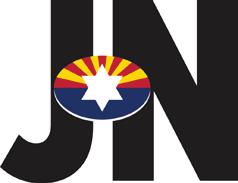

TUESDAY, APRIL 9
Discussion with the Rabbi: 11 a.m.-noon, Valley of the Sun JCC, 12701 N. Scottsdale Road, Scottsdale. Gather together with Rabbi Levi Levertov for a stimulating discussion on an issue relevant to Judaism in contemporary society. Bring your questions; he has answers! In partnership with Smile on Seniors. Free. For information, contact Chani at 602.492.7670 or chani@sosaz.org.
APRIL 11, 13 & 14
J Youth Theater presents “Willy Wonka, Jr.:” 7:30 p.m. Desert Shadows Middle School 5858 E. Sweetwater Ave., Scottsdale 85254 Follow the sweet adventures of Charlie Bucket as he tours the factory of the enigmatic chocolatier and learns some valuable lessons along the way. Online ticket sales end Thursday, April 11 at noon. Tickets may be purchased at the door for an
Barbara Moss, right, opens a gift next to her husband, Rabbi Shelly Moss, left, at the Sisterhood Luncheon to honor her years of service to Temple Beth Shalom. The Temple Sisterhood, Brotherhood, Parenthood and congregation all presented the rebbetzin with tokens of appreciation. PHOTO

Rabbi John Linder of Temple Solel speaks at the community-wide interfaith vigil for the victims of the New Zealand shootings at the Islamic Center of North East Valley on March 18.

PHOTO COURTESY OF JEWISH COMMUNITY RELATIONS COUNCIL
A group of preschool students at the Valley of the Sun’s Early Childhood Center celebrated Purim on March 15 by dressing up as Waldo from the “Where’s Waldo?” picture book. PHOTO

Valley of the Sun JCC’s J Swim team reigned supreme with their JRex theme and wins at the 8-under championships held at Cactus Park on March 17. Remington Willard won a first place; Danica Manfredi and Wyatt Liebertz won second places; and Macy Falca won personal best in all her events.

Girl Scout Ambassador Troop 1991 from Pinnacle High School in Phoenix has teamed up with Adam Brooks and Lee Eisinberg of ABLE Financial Group to donate 100 boxes of Girl Scout cookies to Ryan House, a center for respite and hospice services for children facing challenging medical conditions. From left are Erin Furnish, community relations and volunteer coordinator at Ryan House; and Girl Scouts Mackenzie Scott-Martin, Chloe Main and Isabelle Jacobs. PHOTO PROVIDED BY ABLE

Susan Ellen Sobel of Encinitas, California, died on Feb. 27, 2019, at 75. Sobel, who was born on Aug. 6, 1943, in Brooklyn, New York, leaves behind companion Dr. Larry Krause, daughter Robin (Ron) Israel, son Craig (Donna) Lesman and brother Stephen (Linda) Sobel, as well as two grandchildren. She lived in Arizona from 1972 to 2011.
Services were held at El Camino Memorial Park in San Diego on March 1, 2019, and officiated by Rabbi Leah Herz.
Donations in Sobel’s memory can be made to the Seacrest Foundation or the Parkinson’s Association. Mortuary services were provided by Am Israel Mortuary in San Diego, California.




Maxynne “Cooky” Tarkoff, 84, of Scottsdale, formerly of Chicago, Illinois, passed away March 17. She is survived by her daughter, Terri Abalos (Richard), sons Dan Tarkoff and Jack Tarkoff (Nora), grandchildren Sarah, Catherine, Christopher and Brian, as well many nieces, nephews, step-grandchildren and great-grandchildren. She was married to her beloved late husband, Gene Tarkoff, for 61 years.
Cooky was known for her love of books and her volunteer work at libraries and the Heard Museum. Funeral services were held Sunday, March 24, at Mt. Sinai Cemetery in Phoenix. In lieu of flowers, memorial contributions may be made to the Heard Museum, 2301 N. Central Ave., Phoenix, AZ 85004 or Hospice of the Valley, 1510 E. Flower St., Phoenix, AZ 85014. Arrangements by Sinai Mortuary.
Lawrence Jeffrey Marks, 76, of Scottsdale, passed away on March 17, 2019. He stayed true to himself to the end of his life, facing life with a brave fighting spirit and a lively sense of humor, dying peacefully at home. Larry was born in Shaker Heights, Cleveland, Ohio, and moved to Phoenix as a little boy with his mother, brother, grandmother and grandfather, following the death of his father. He attended schools in the Madison District, Army and Navy Academy in Carlsbad, California, and graduated from Central High School as a part of the first class to attend all four years there. While Larry was in high school, he wrestled and played football. He graduated from the University of Colorado where he was a varsity wrestler. He earned a law degree from the University of Arizona and practiced law for 50 years.
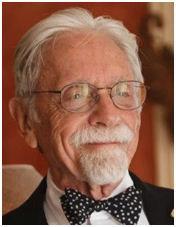
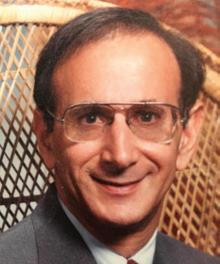
Larry is survived by his wife of 51 years, two daughters and their husbands, three grandchildren, his brother, nieces, nephews and cousins. He was preceded in death by his mother, father and stepfather. Funeral services were conducted at Sinai Mortuary with Rabbi Sadie Rueben officiating.
Because of Larry’s involvement with Lura Turner Homes for developmentally disabled adults and also because of the family’s appreciation of the kind care from Hospice of the Valley, we request that, in lieu of flowers, donations be sent to Lura Turner Homes, 8640 N. 19th Ave., Phoenix, AZ 85021, or to Hospice of the Valley, 1510 E. Flower St., Phoenix, AZ 85014 (hov.org). Arrangements by Sinai Mortuary.

Selling Below current market value !!! 2 Single plots in the highly desired Temple Chai Section. May be upgraded to a companion (burial for 2) space through the cemetery.
Judi Glass 602-448-4099
judi@mccabeworld.com


Roger S. Robinson, Ph.D., businessman, community leader, teacher and mentor, died peacefully in his Paradise Valley home at the age of 92 on March 15, 2019. He was born in Detroit, Michigan. For over 50 years, following time in the Navy and graduation from Harvard University, Roger successfully created and operated a multiunit entertainment and recreation enterprise in Michigan. During this time he oversaw all aspects of the organization including management and operations, expanding to new locations, strategic planning, marketing, finances and personnel.
While managing his business, Roger synchronously enhanced his management and leadership skills by pursuing his formal education obtaining advanced degrees from Wayne State, Michigan State and Walden universities, and Harvard’s Advanced Management Program. Roger relished sharing his expertise and knowledge with nonprofits becoming an active member of DESC (Detroit Executive Service Corps) as well as other local nonprofits.
Success provided Roger with the proverbial offer one could not refuse and he moved to Phoenix in 1999. There, he pursued his vision of combining his entrepreneurial and academic experience, for the benefit of both nonprofits and for-profit enterprises, to help them pursue their dreams, visions, missions and values. In fulfillment of this goal, he has been an active member of ESCAZ (Executive Service Corps of Arizona-clients included Phoenix Indian Center & Drug Free AZ) as well as American Cancer Society (Relay for Life-event chair) and SCORE ® (Counselors to America’s Small Business), a resource partner of the SBA, for whom he conducted business-planning seminars in addition to mentoring clients. He also served as a committee member and board member of numerous philanthropic and community organizations.
Roger was a faculty member at colleges and universities in Michigan and Arizona, teaching a variety of management courses including general management, strategic management, organizational behavior and ethics.
Avid art collectors, he and his wife Janet were members of the Clay Leaders of America at the ASU Art Museum as well as the Phoenix Art Museum. In his 80s, Roger found time to write a collection of poems and to learn woodworking.
Roger is survived by his loving wife Janet and his grateful blended family of children, grandchildren and great-grandchildren. He was preceded in death by his beloved wife Blanche, with whom he was married for 42 years.
A memorial service was held on Friday, March 22, 2019, at Temple Solel in Paradise Valley, AZ. The family requests that any donations in his honor be made to The JoyBus Diner, 3375 E. Shea Blvd., Phoenix, AZ 85028. Arrangements by Sinai Mortuary of AZ.
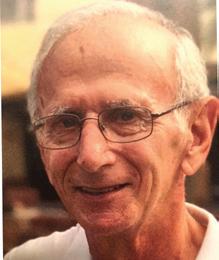


Make a charitable donation to Jewish News and help support Jewish community journalism.


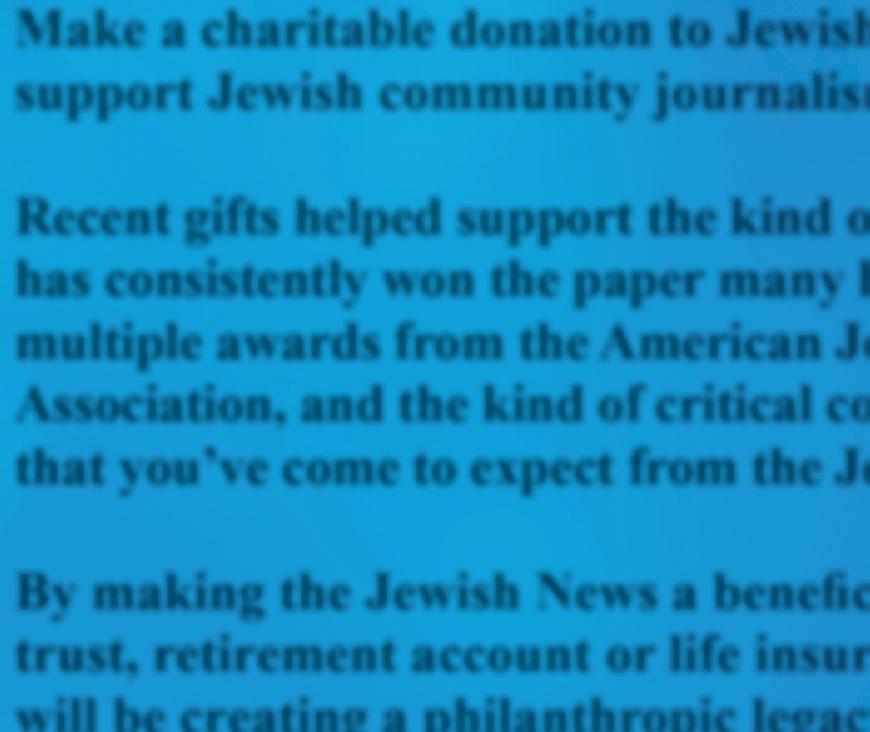



Recent gifts helped support the kind of reporting that has consistently won the paper many honors, including multiple awards from the American Jewish Press Association, and the kind of critical community coverage that you’ve come to expect from the Jewish News.
By making the Jewish News a beneficiary of your will, trust, retirement account or life insurance policy, you will be creating a philanthropic legacy that will help sustain the vibrant voice of Jewish Arizona. Whether you read us in print or online, please help us continue our commitment to bringing you the local Jewish news our community counts on.


Contributions to the Jewish News, a 501(c)(3) organization, are tax deductible. Seek independent professional legal advice before making any change to your plans.


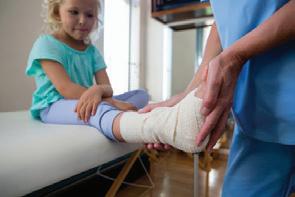
JANET PEREZ MANAGING EDITOR
It’s become a depressingly familiar rite that parents must go through with their children every time there is a mass shooting. But for Jewish parents, the massacre at a synagogue in Pittsburgh has burned with the anguish of thousands of years. Children have heard and talked about shootings in schools and malls, but talking about a shooting



problem is not as big, but still has an impact on prisoners and visitors. But that has not stopped the Aleph Institute from providing its services.
Please subscribe and continue to support JEWISH NEWS with a tax-deductible contribution. Complete the form below or go to jewishaz.com/subplus

Please mail the completeted form with payment to
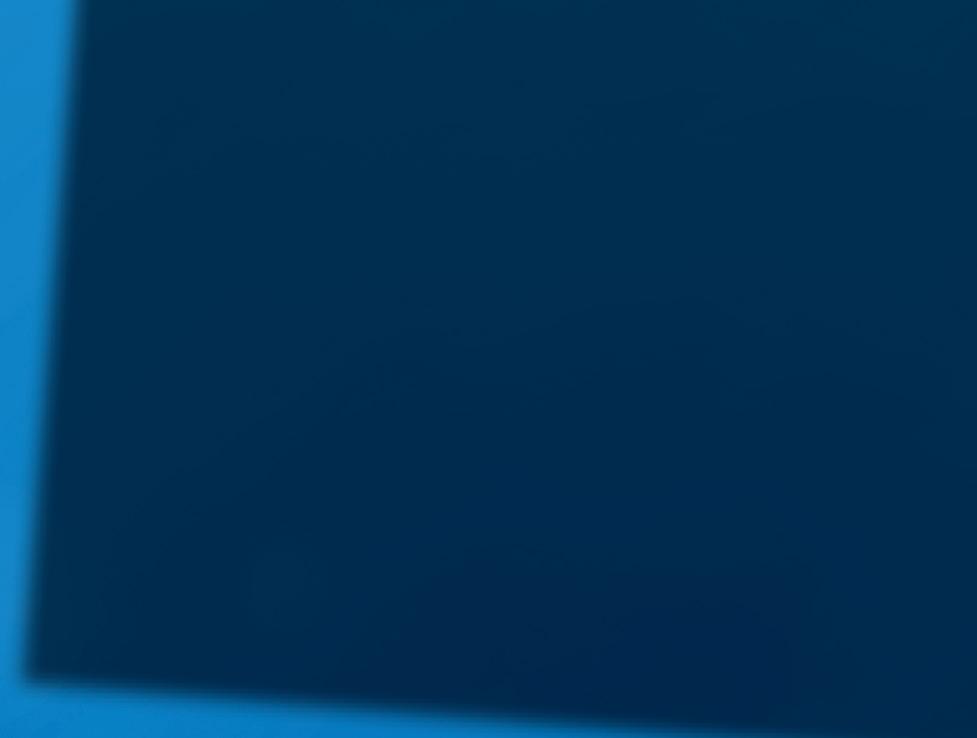
12701 N. Scottsdale Road, Suite 206 Scottsdale, AZ 85254

Jewish organizations keep prisoners from being forgotten